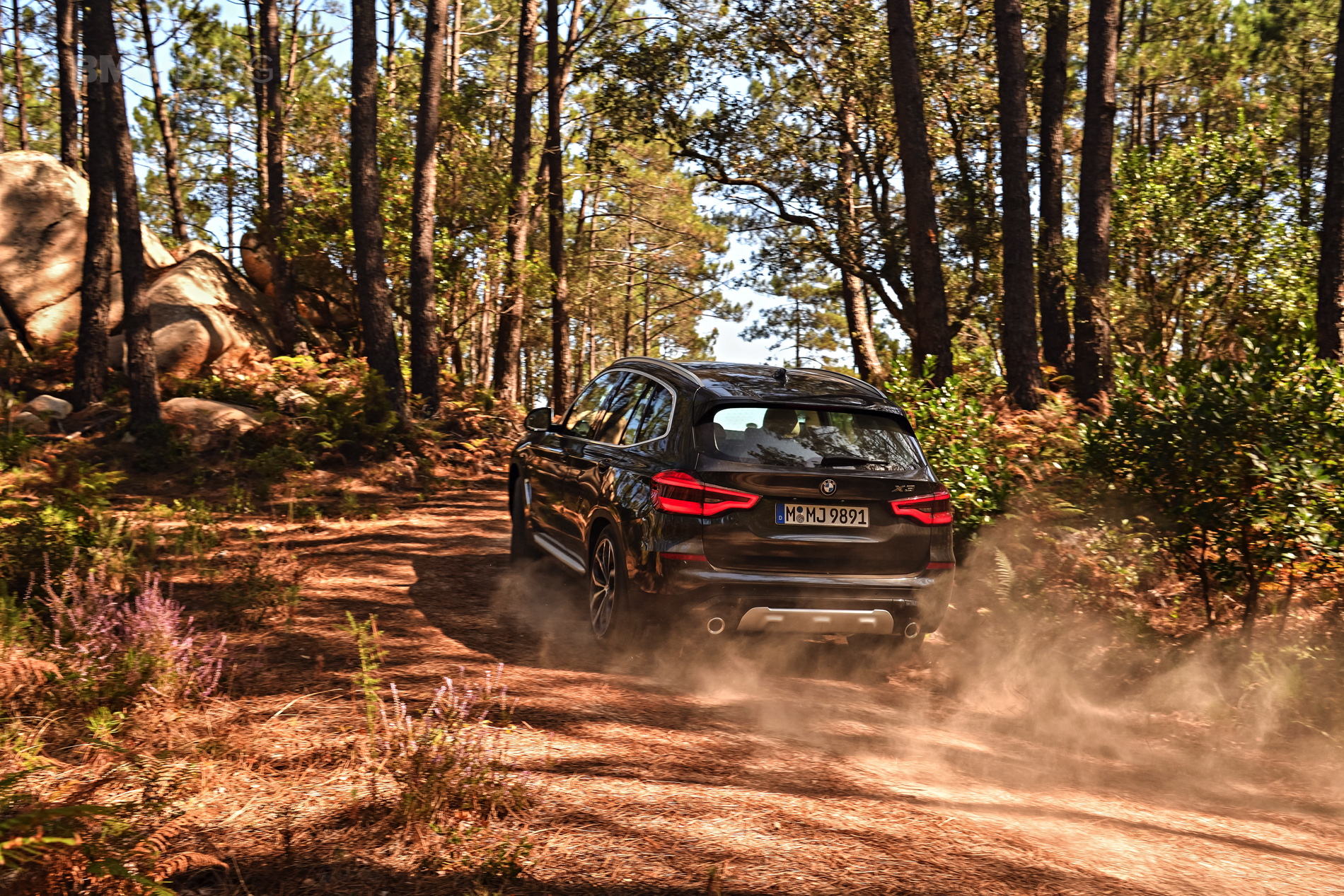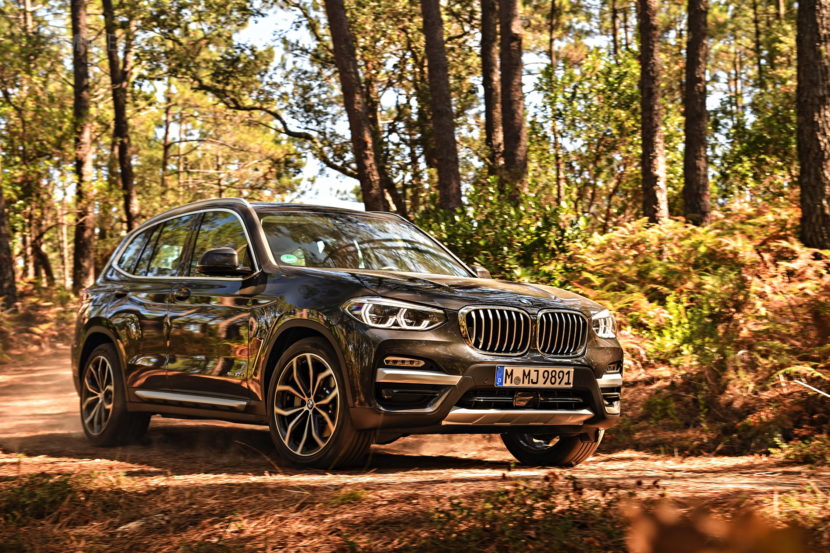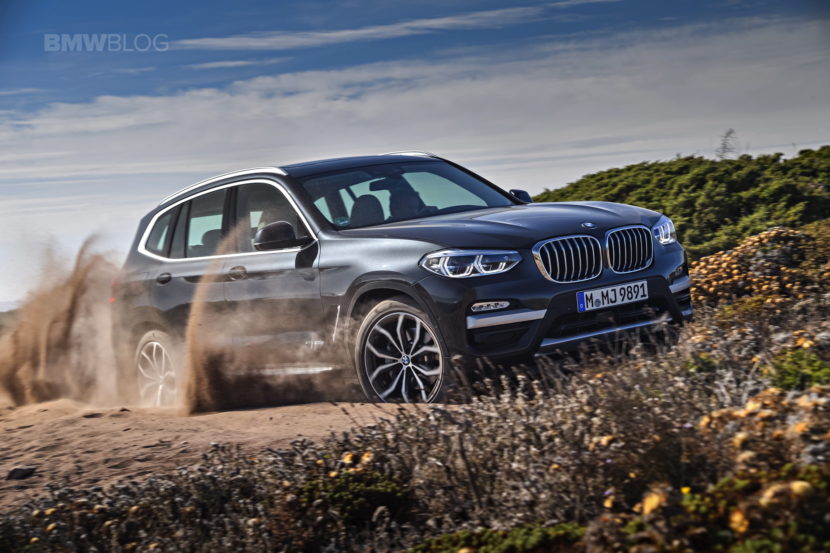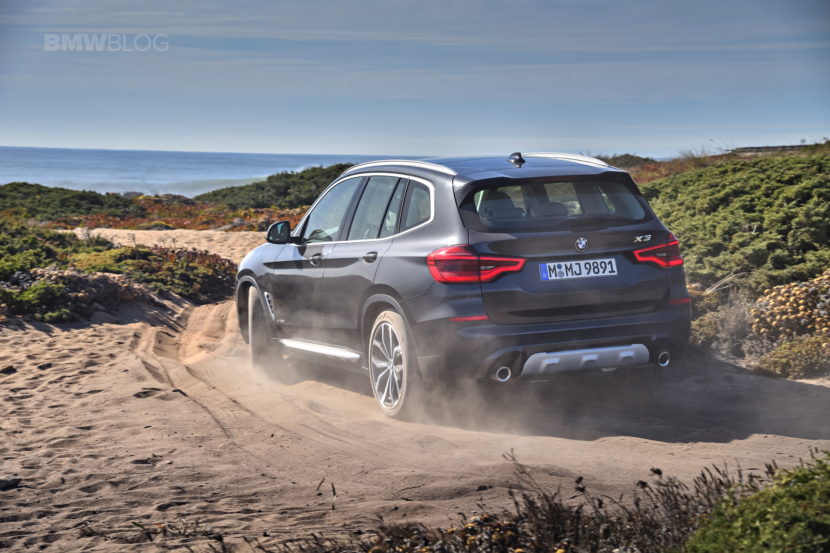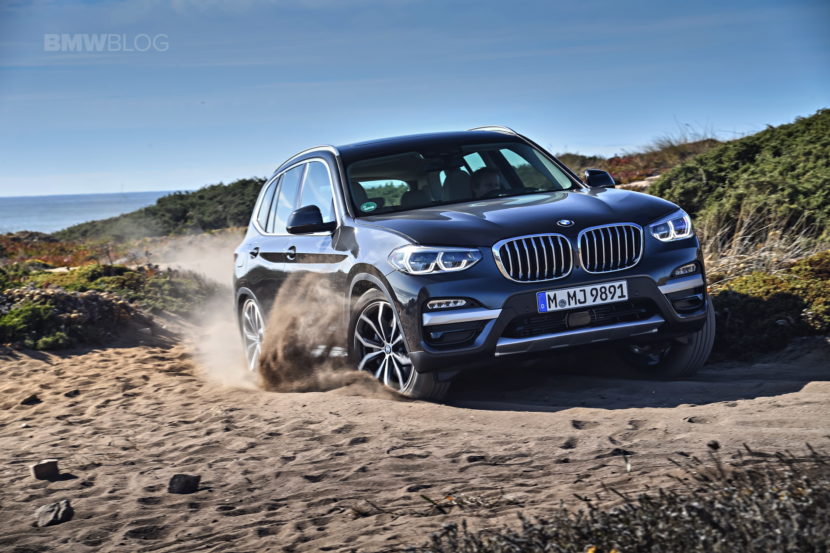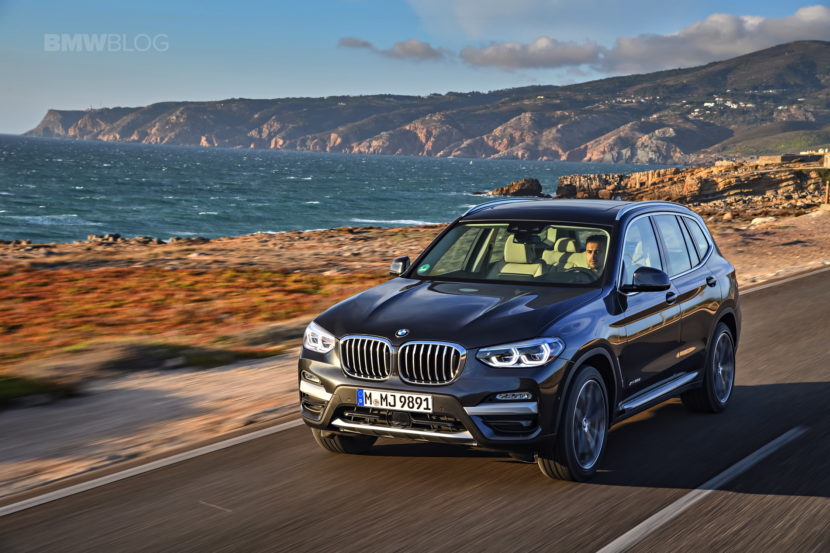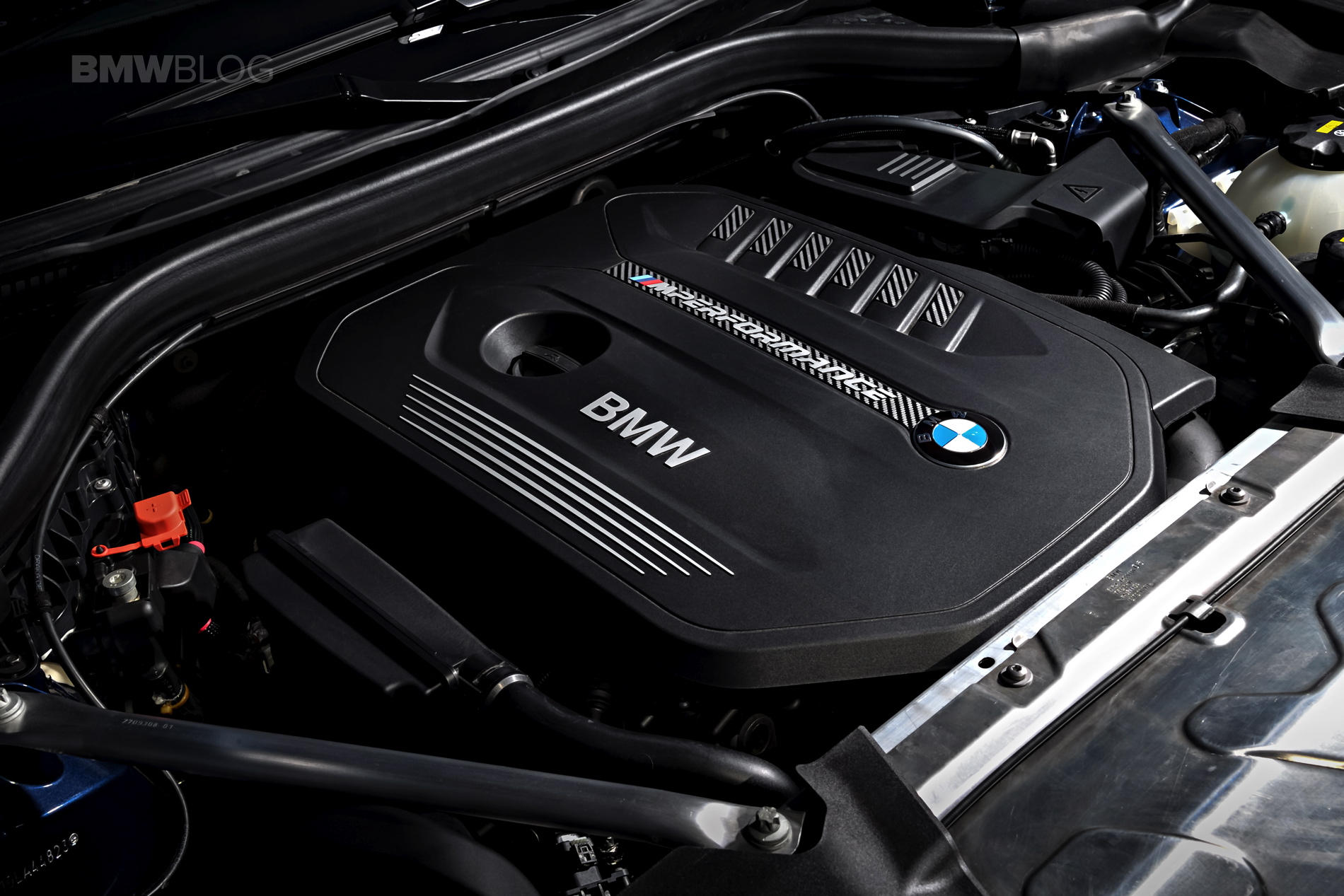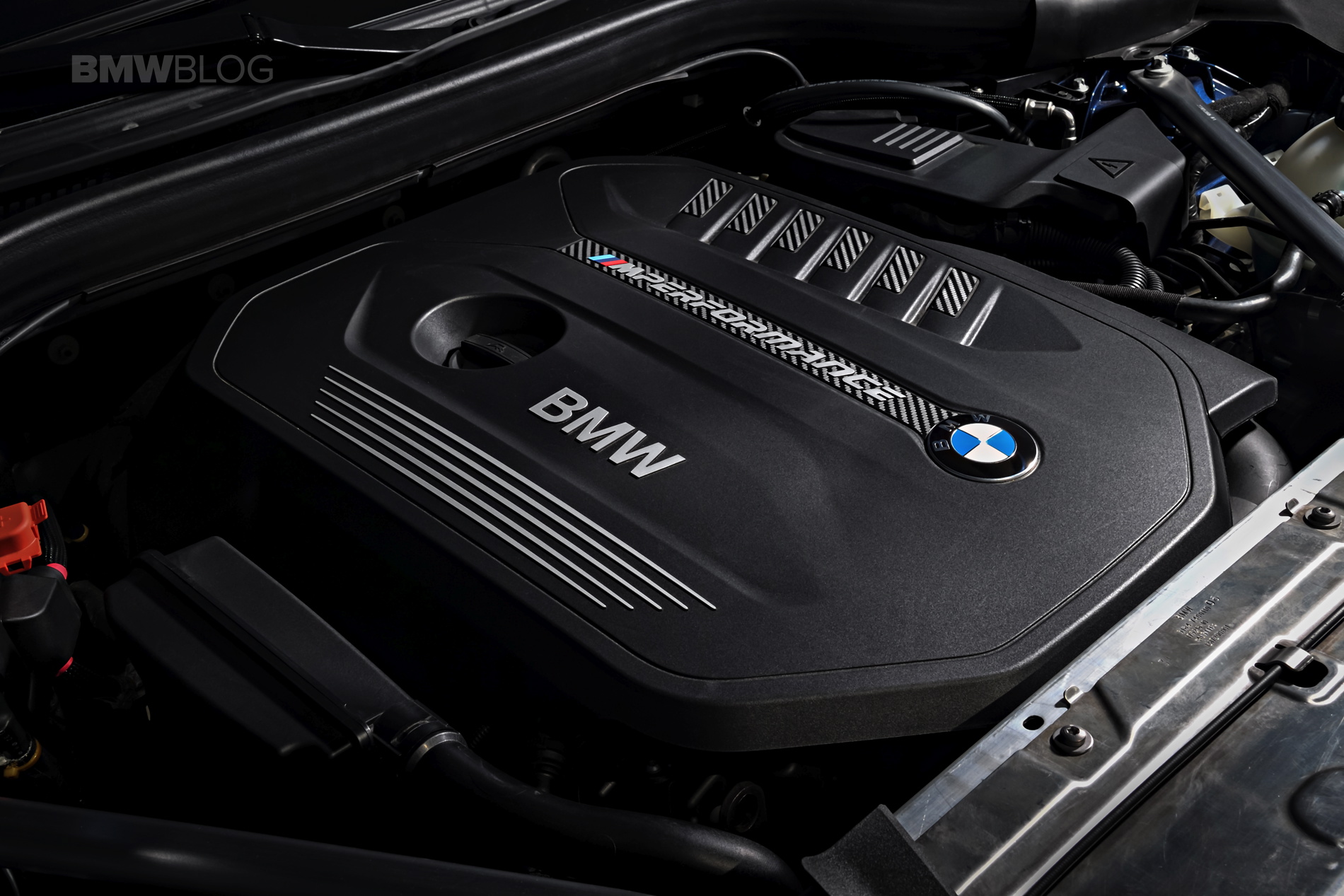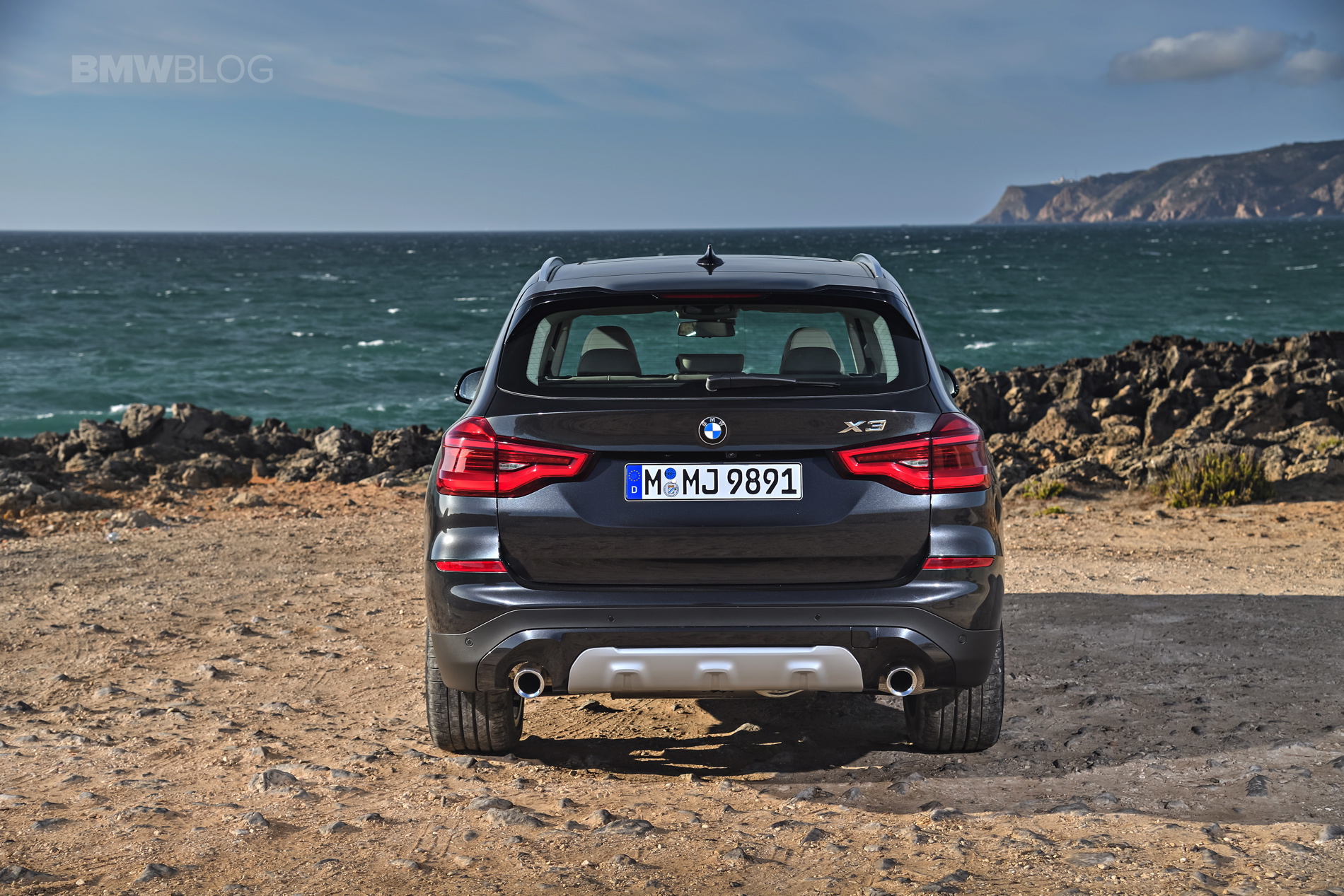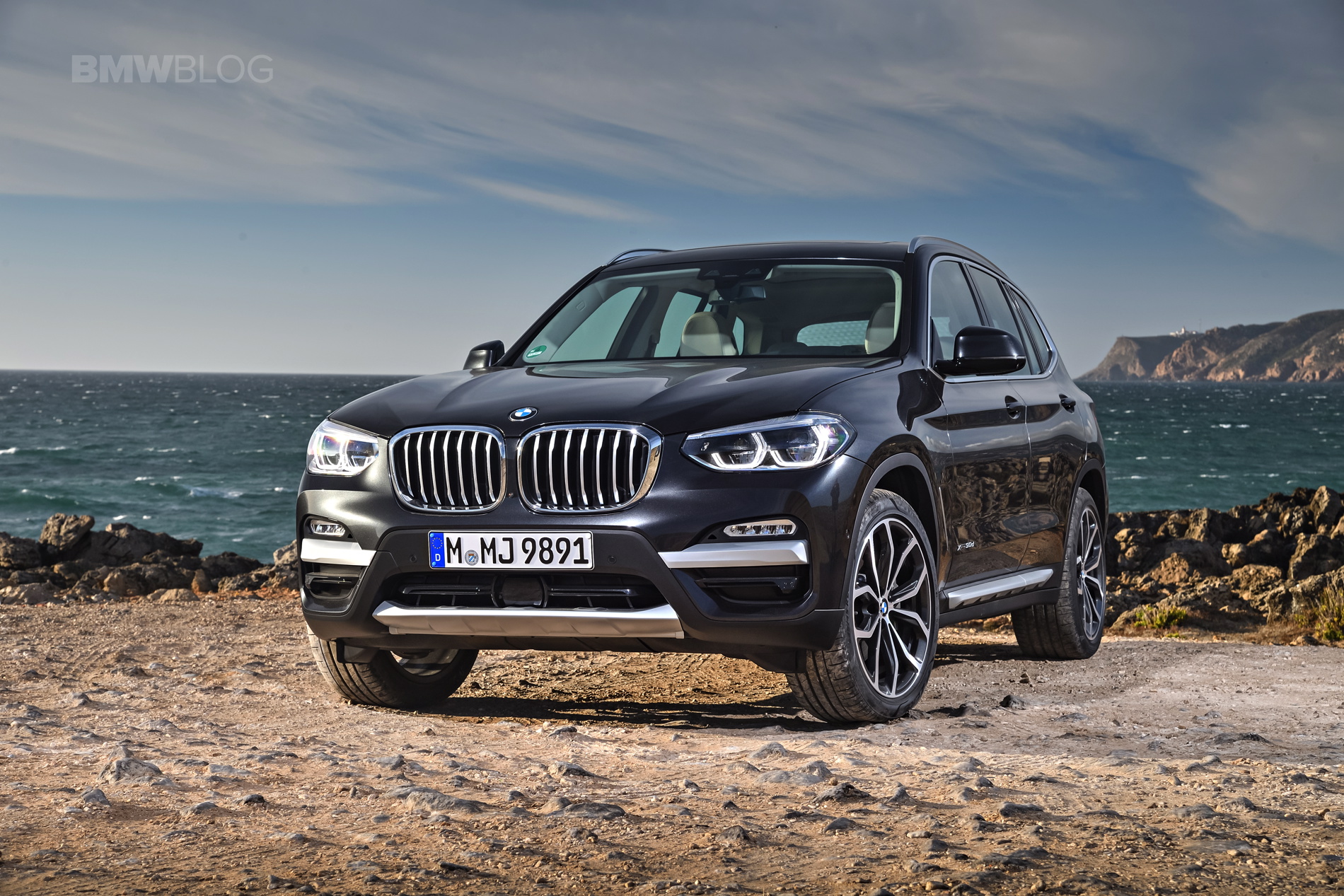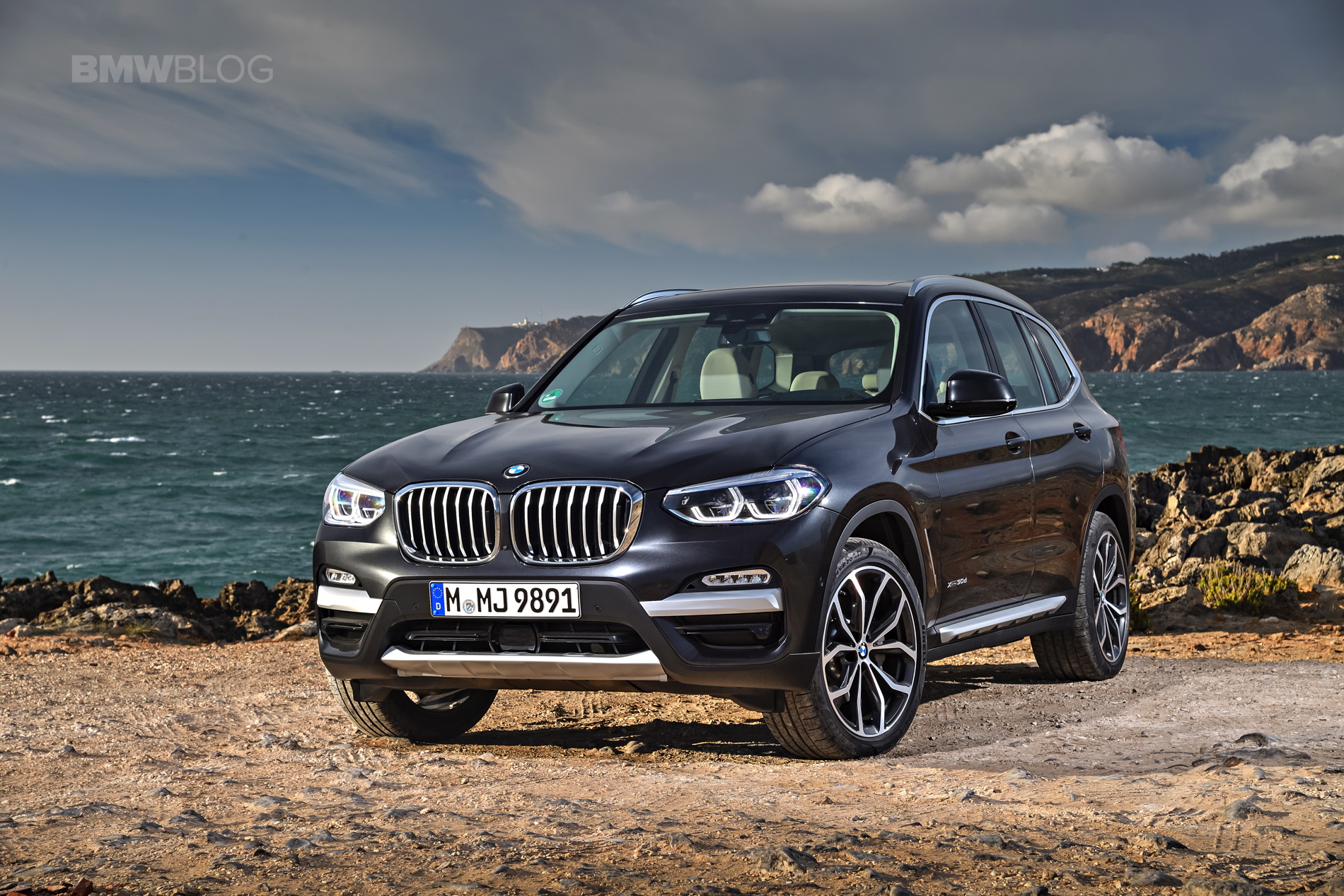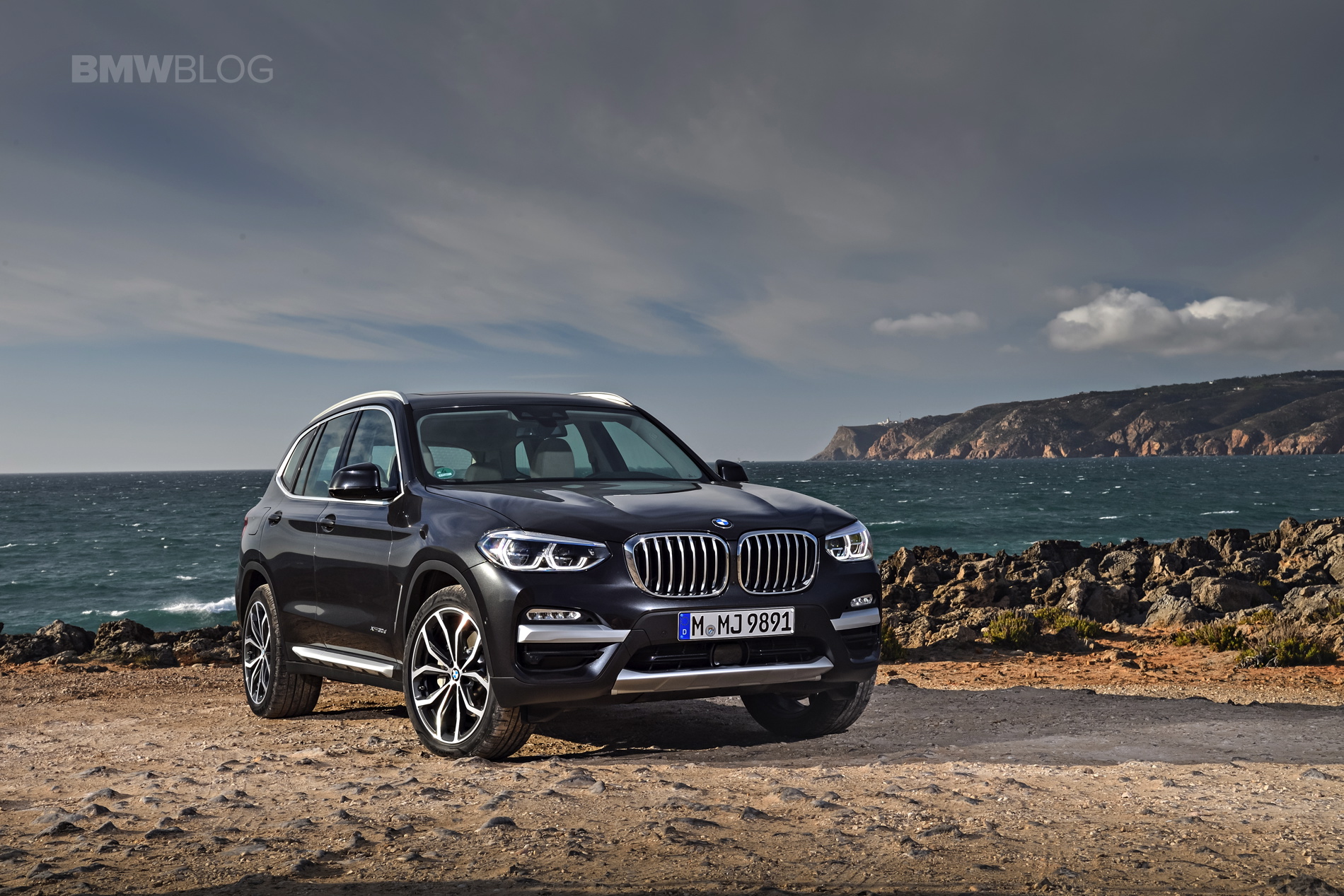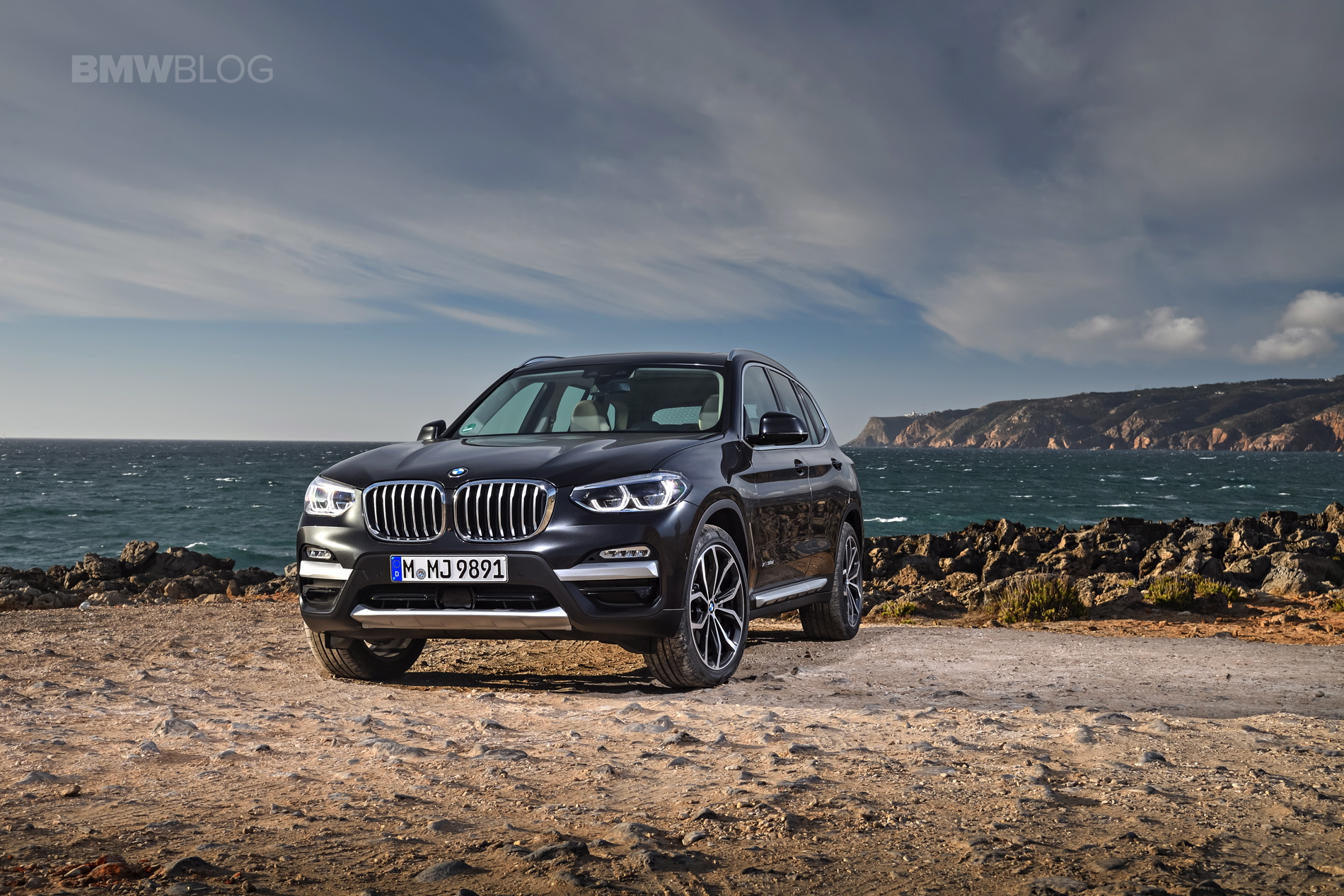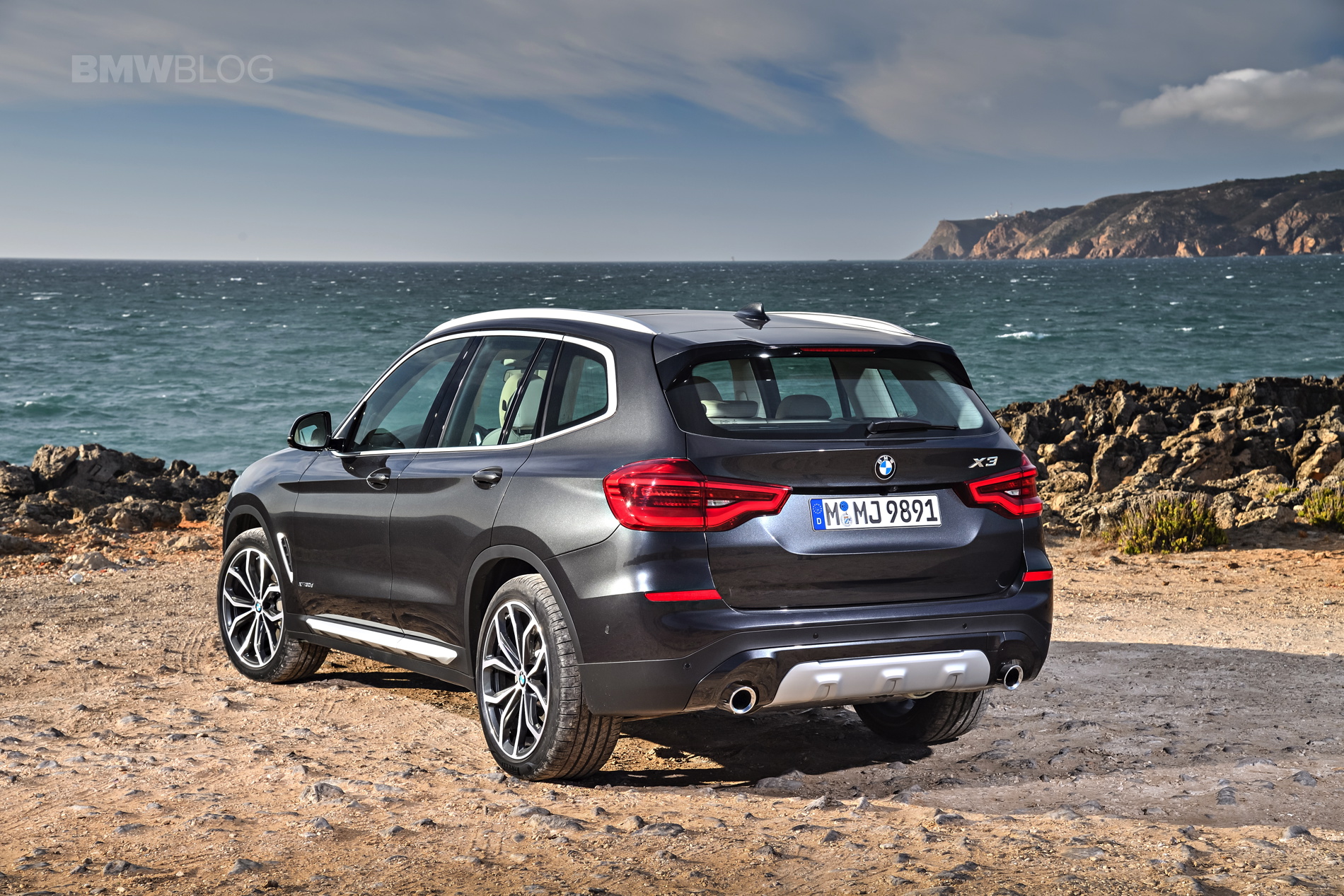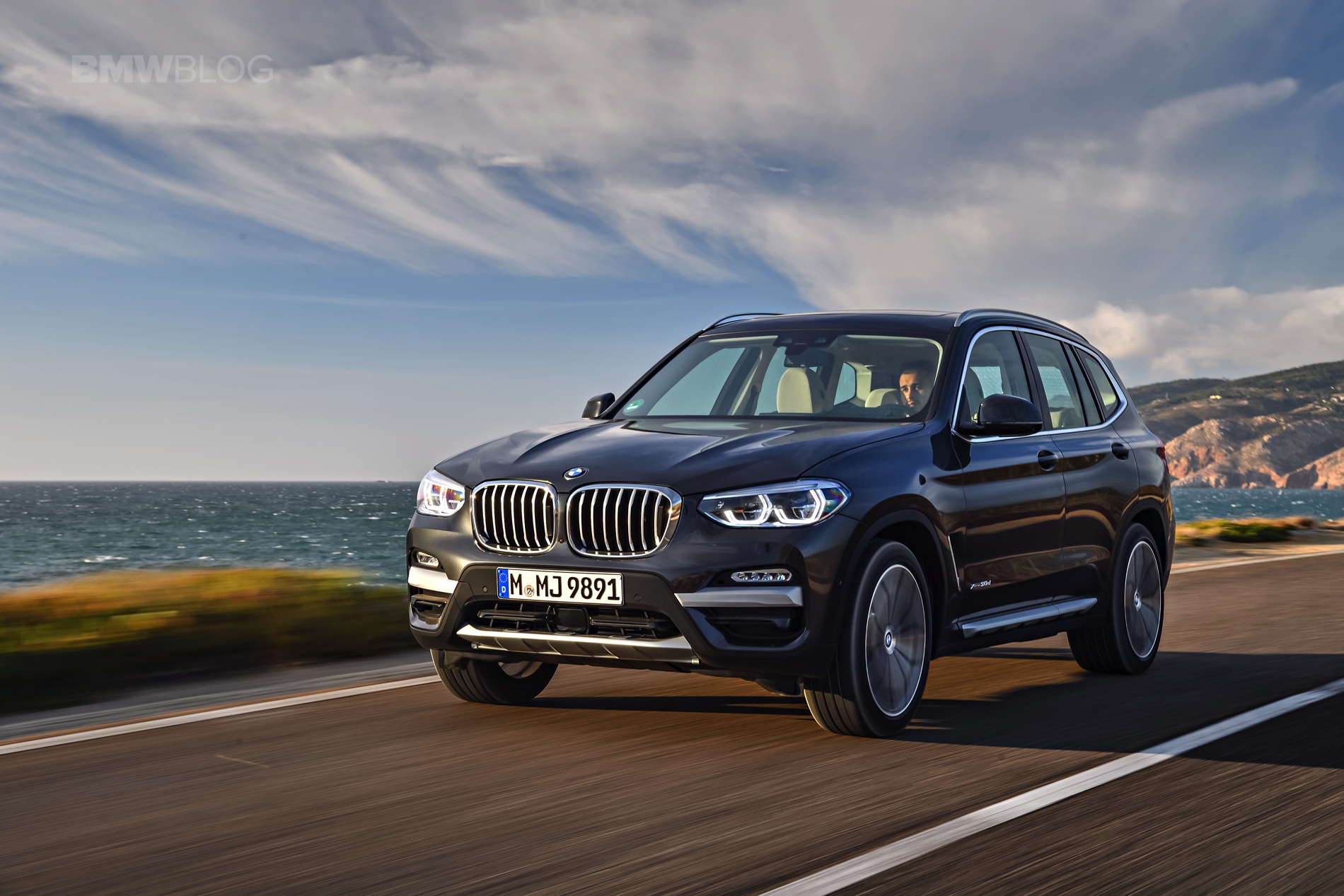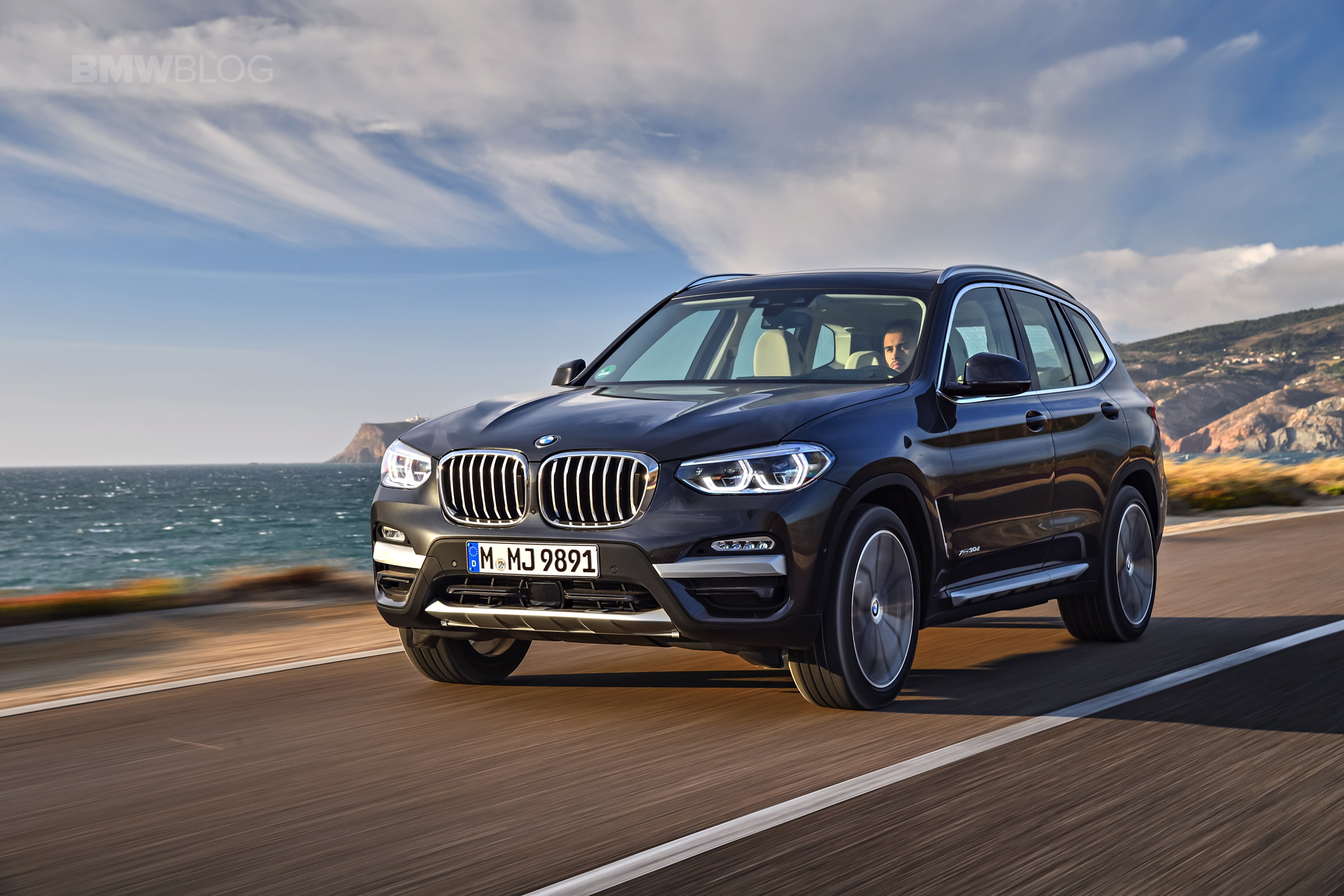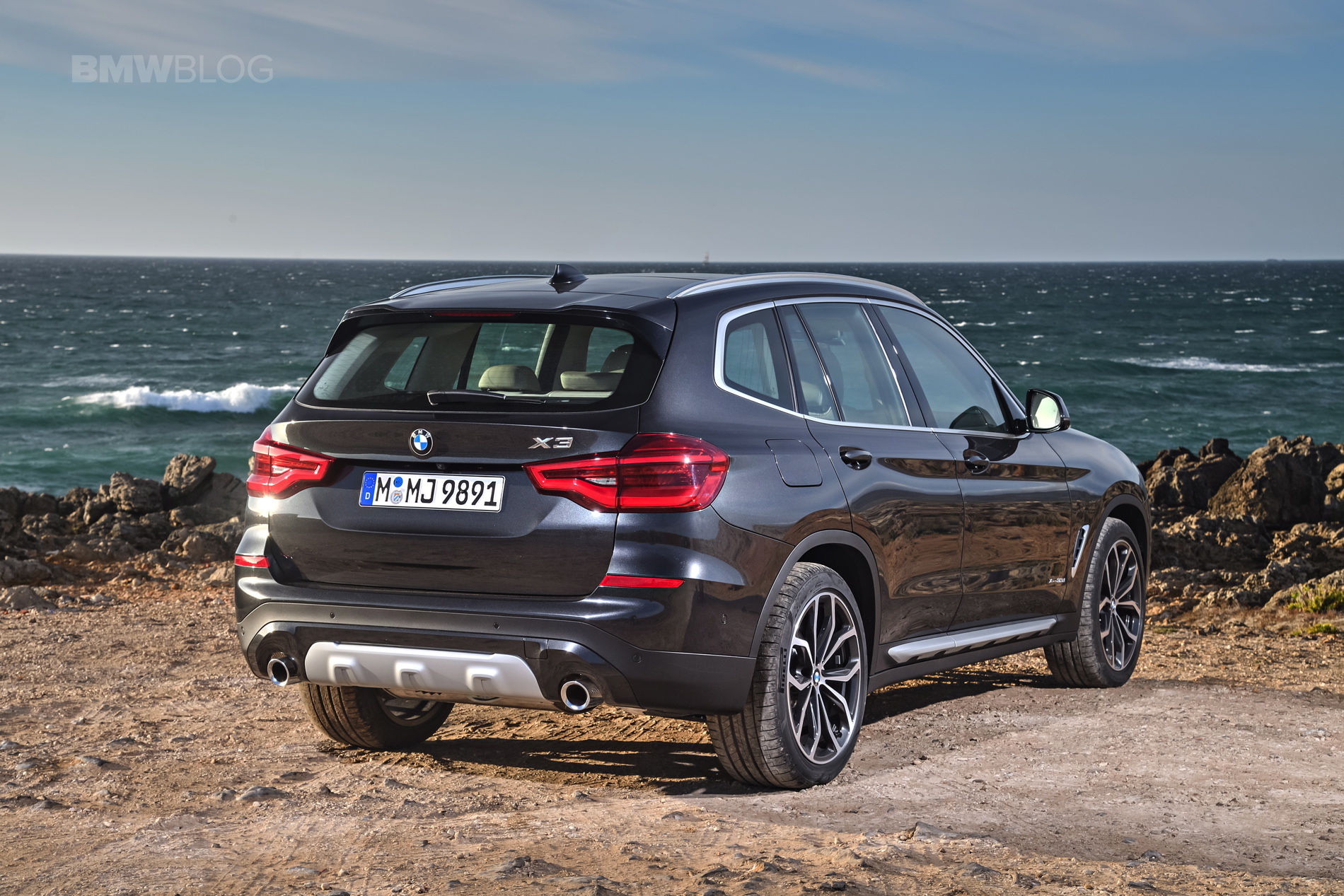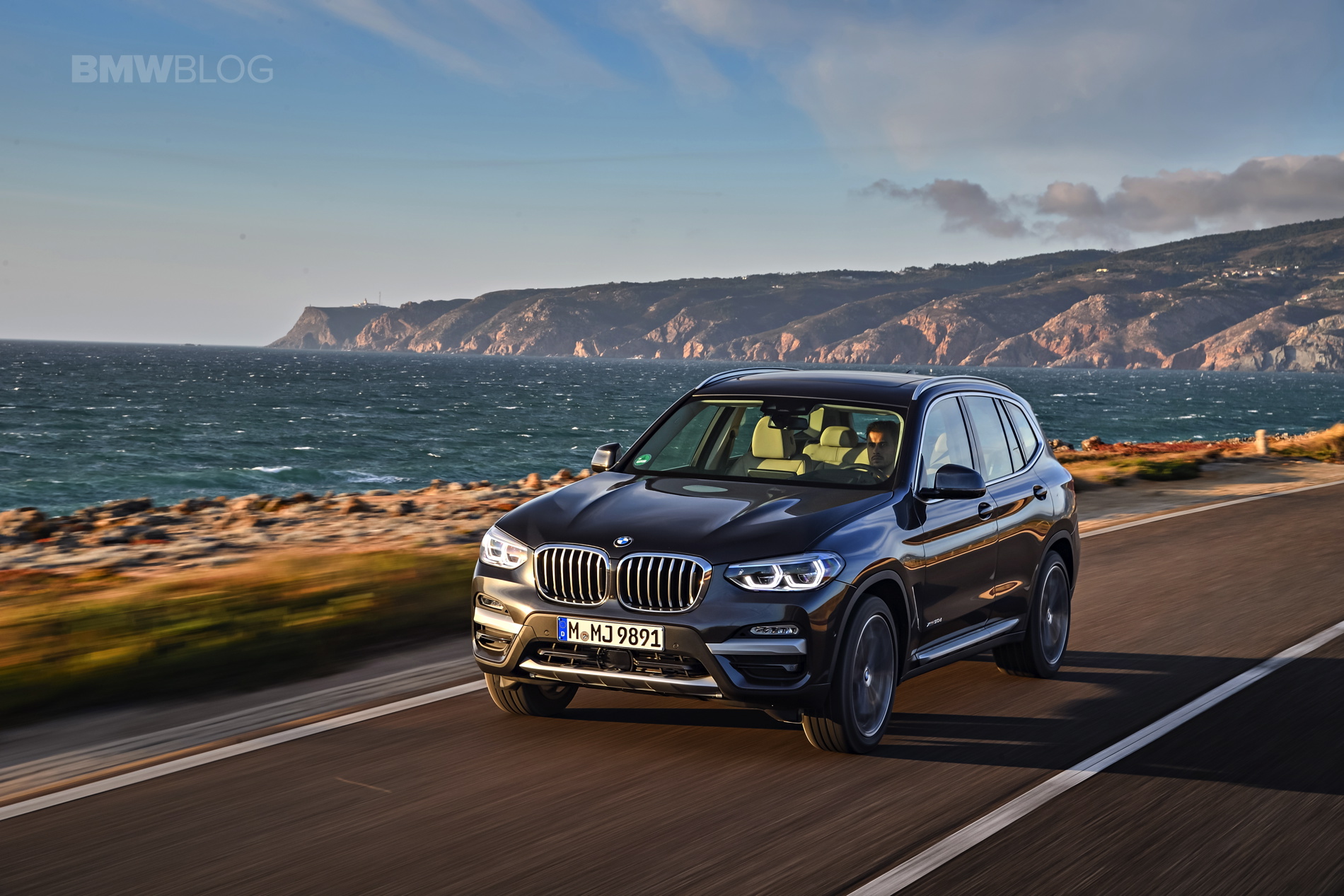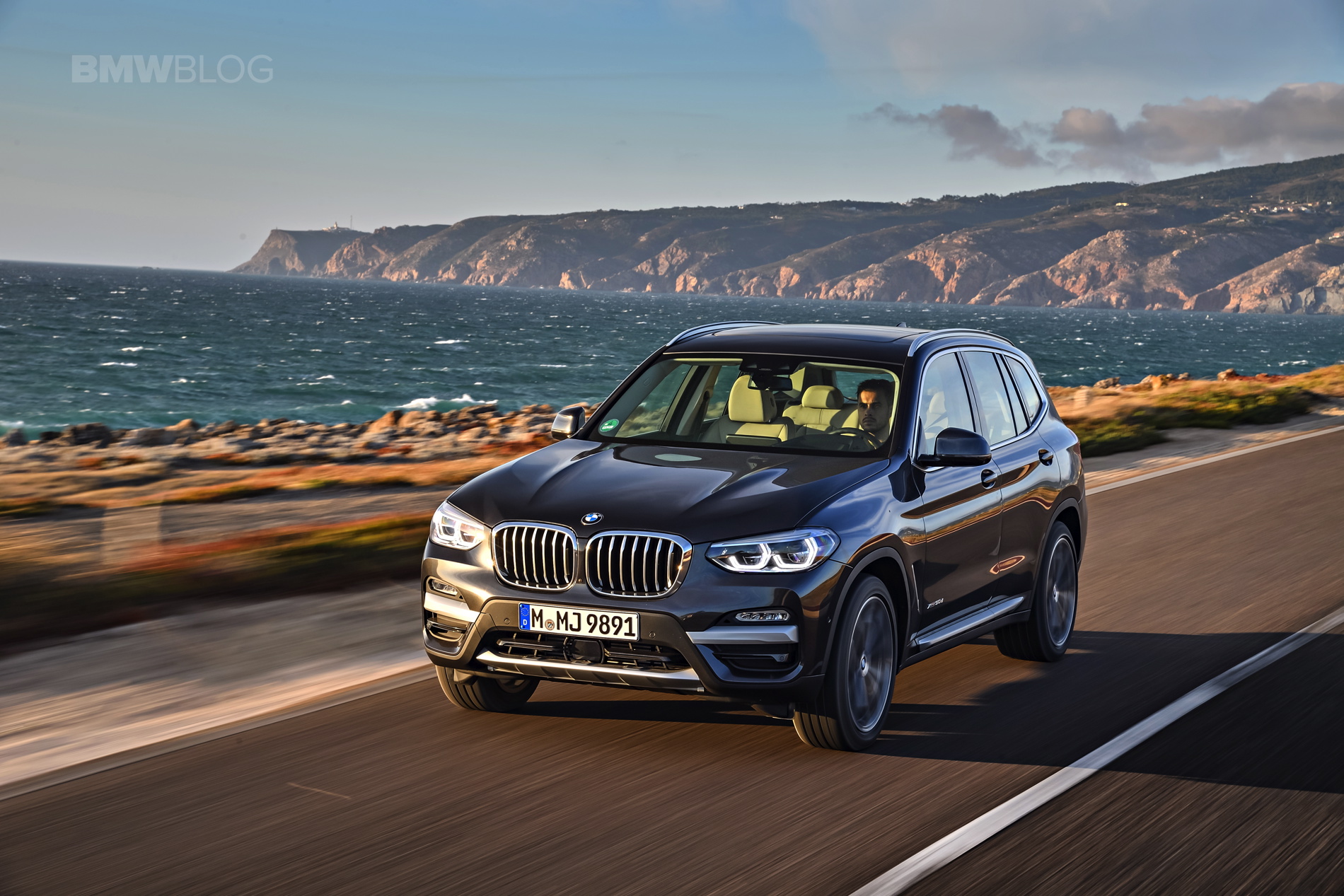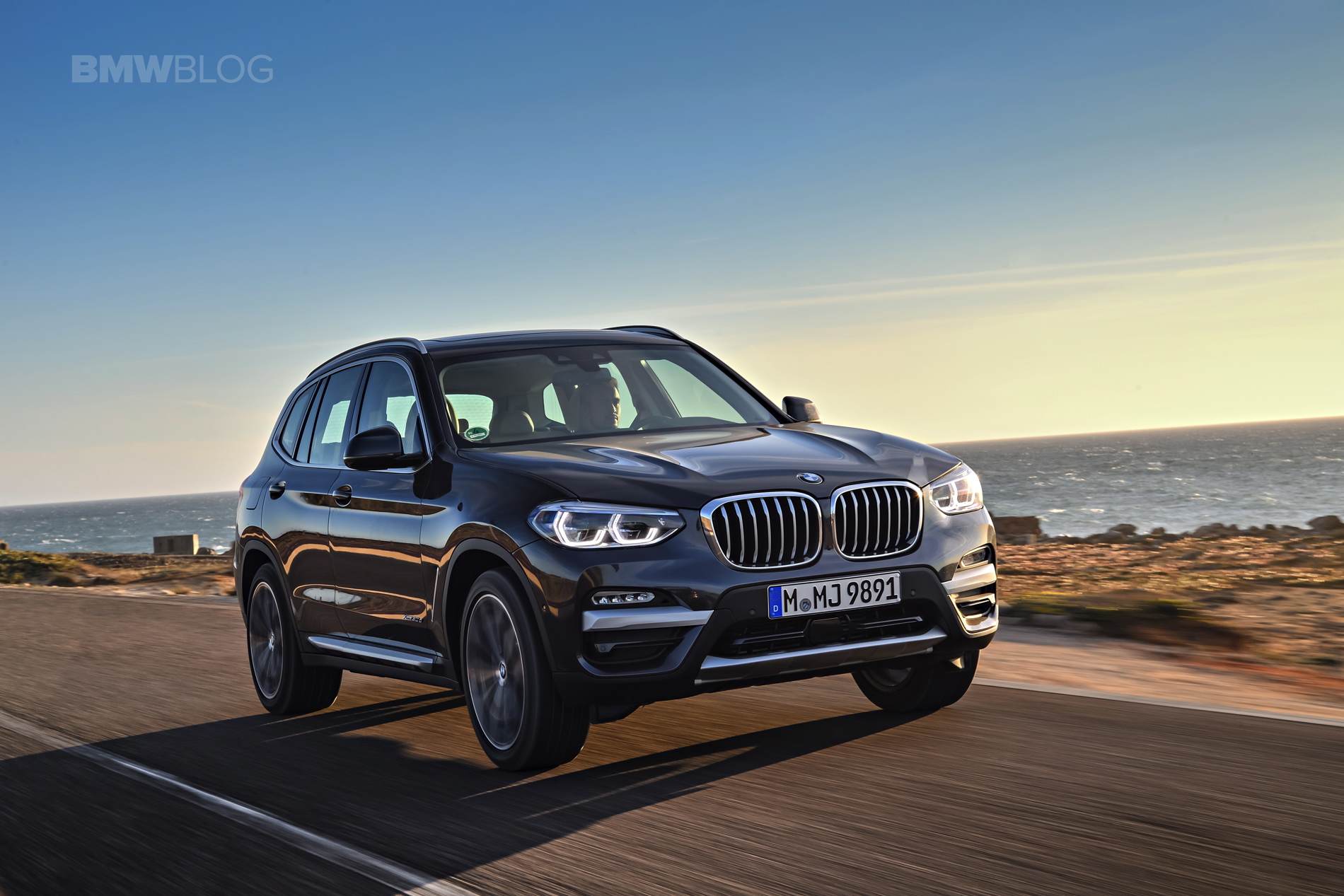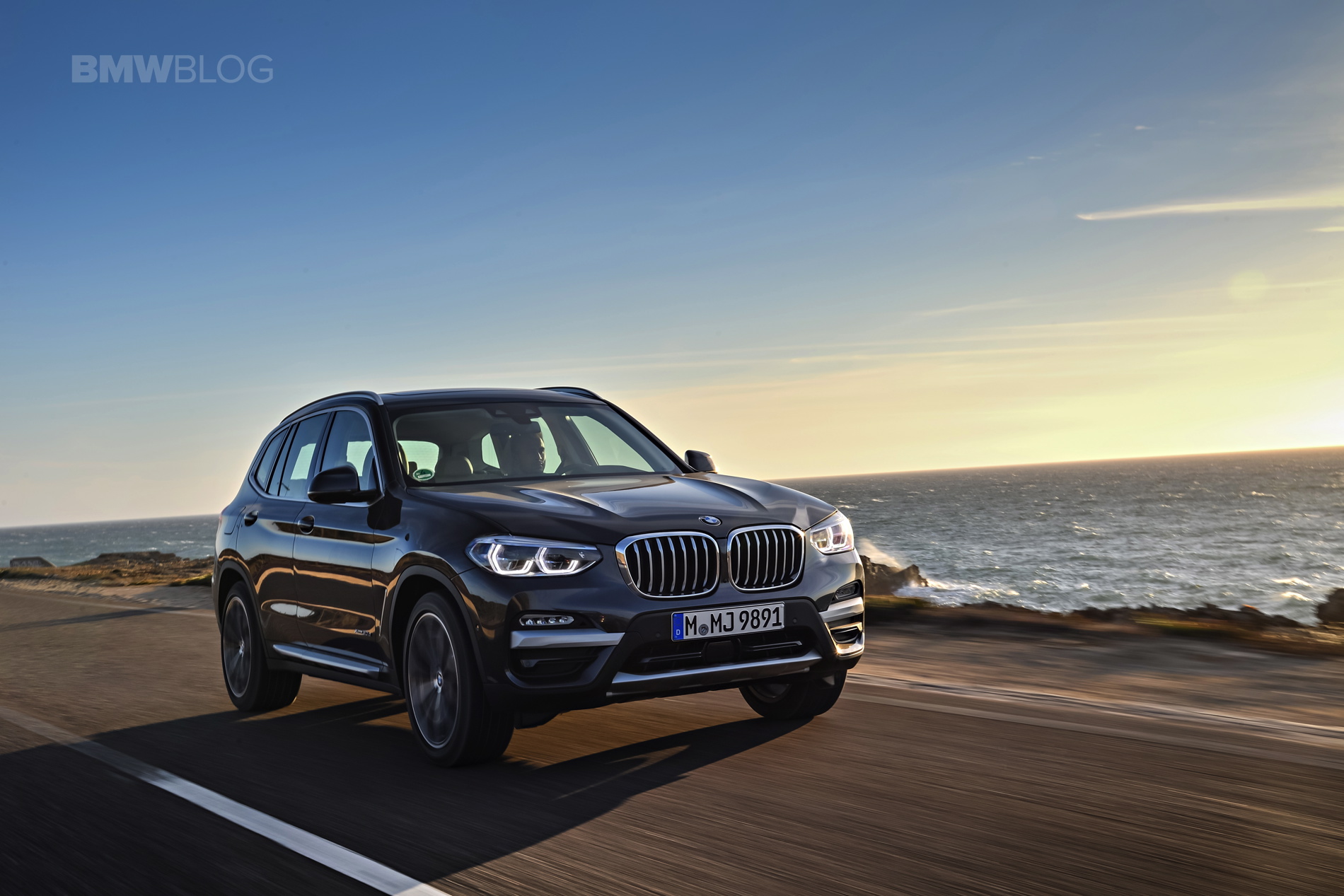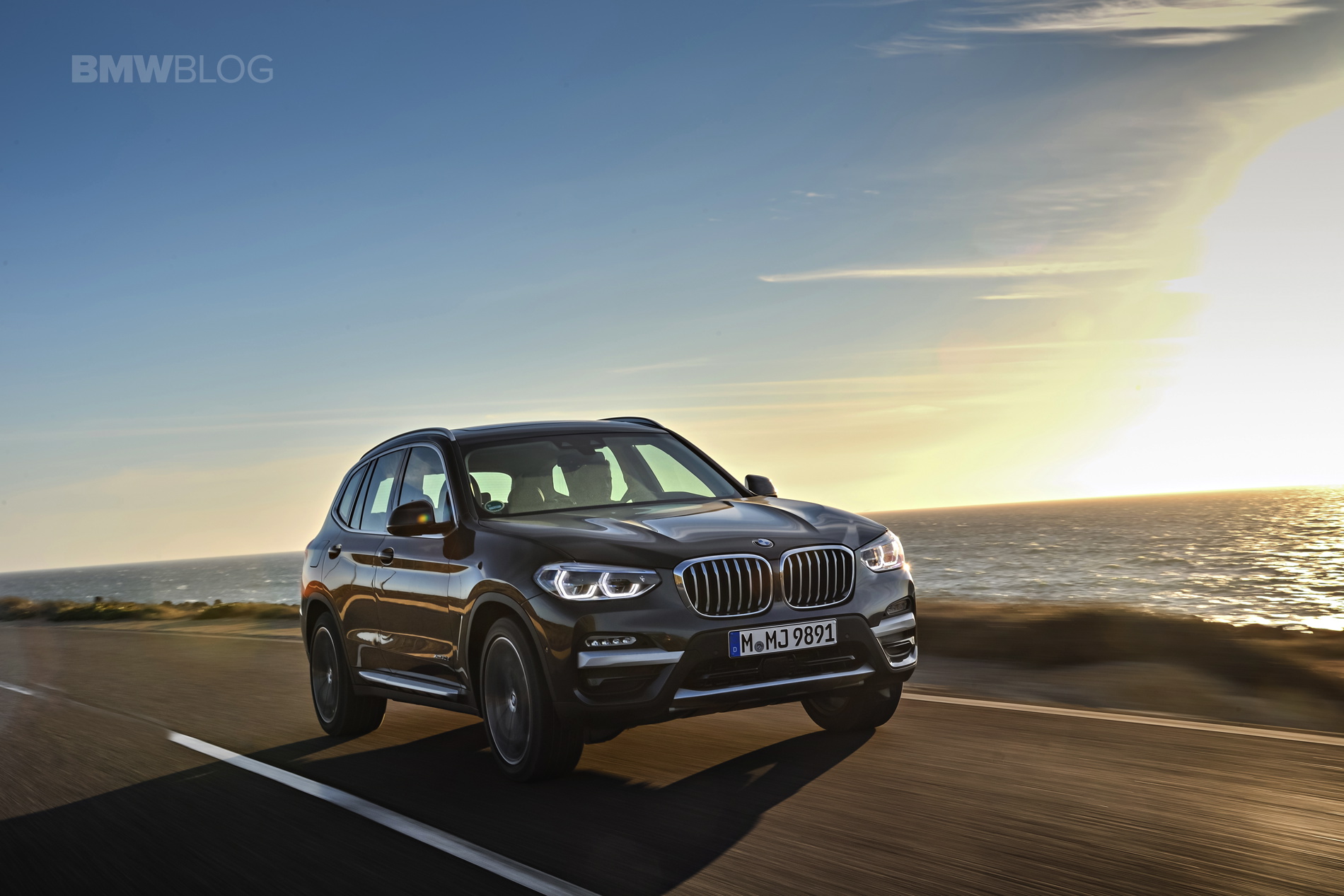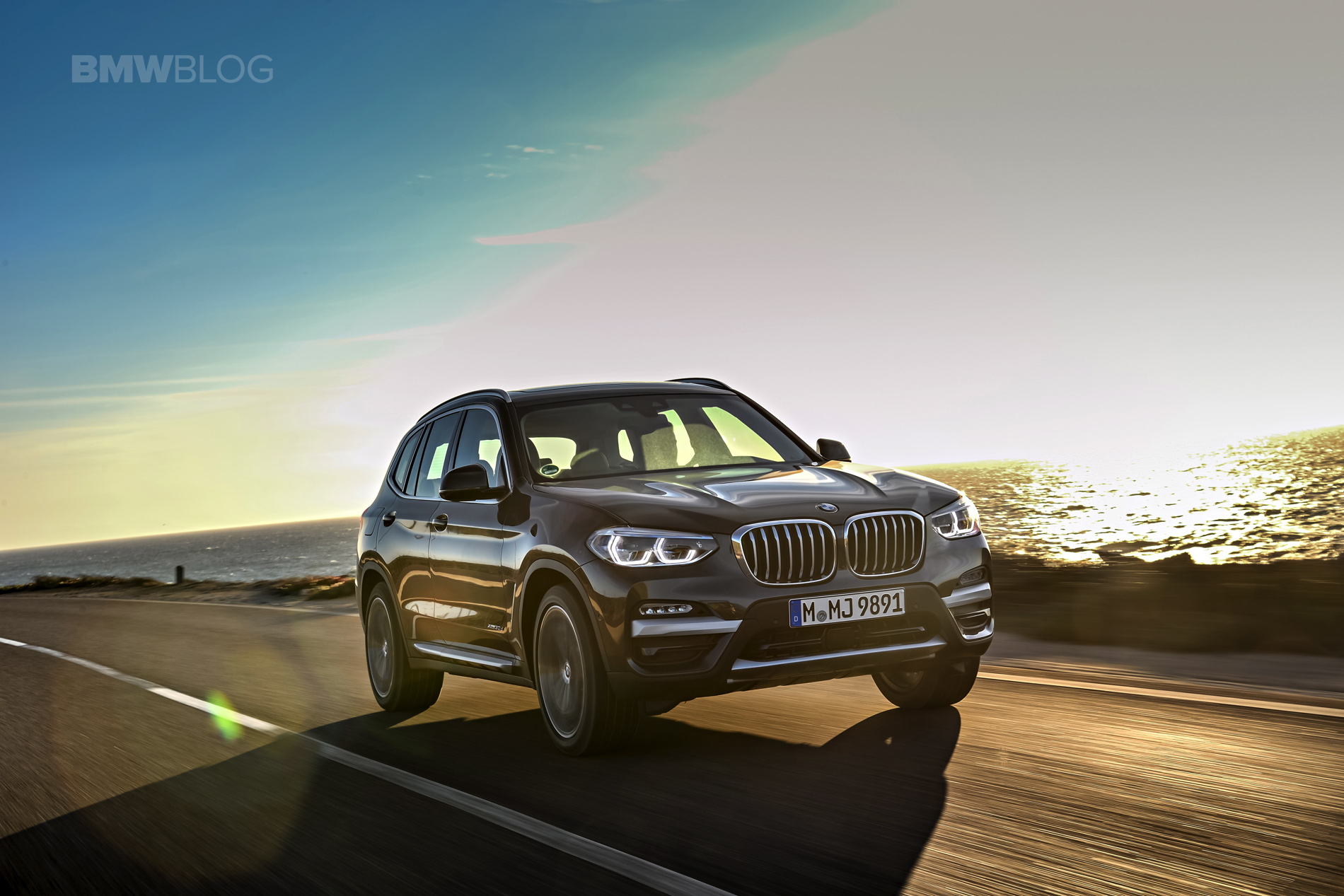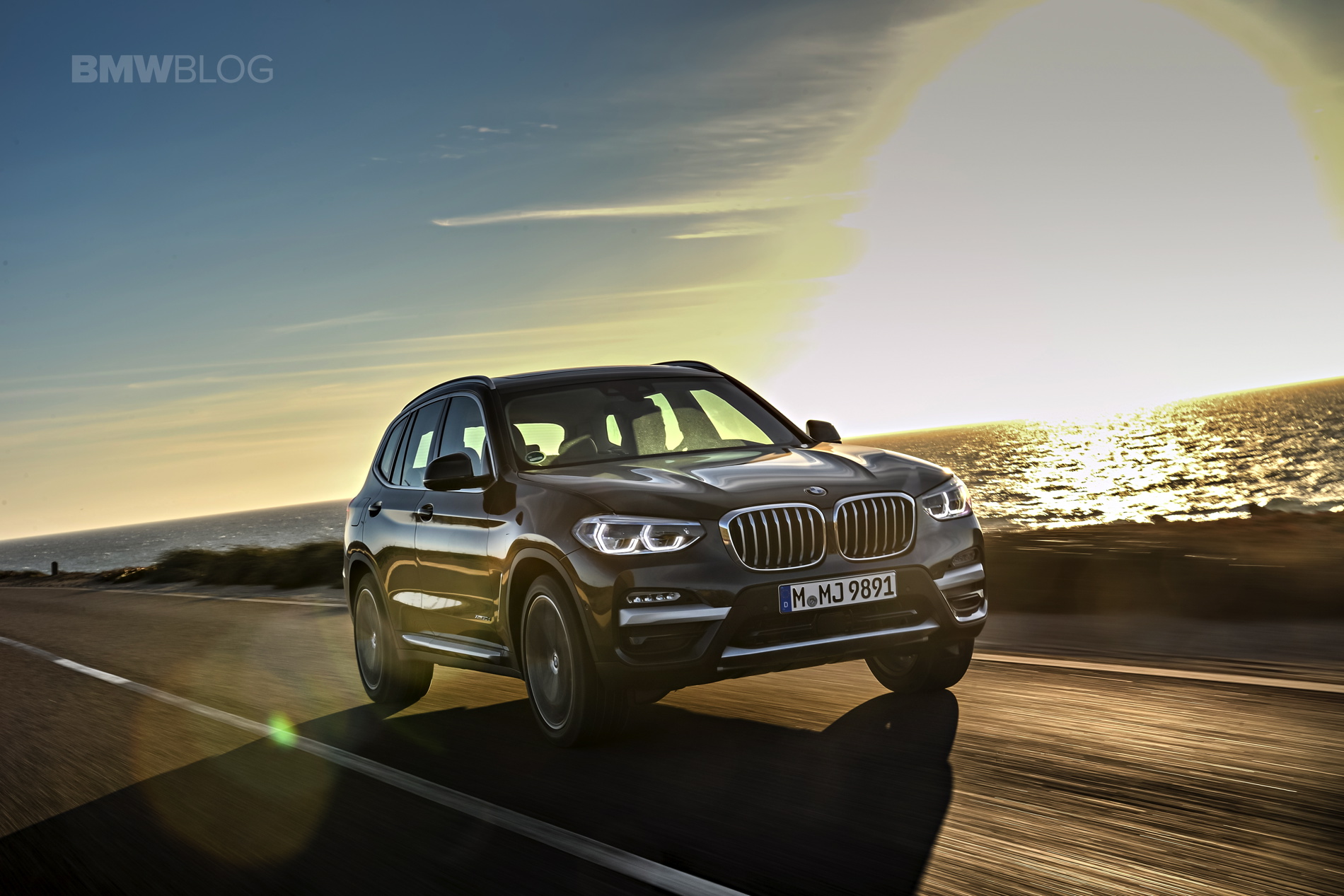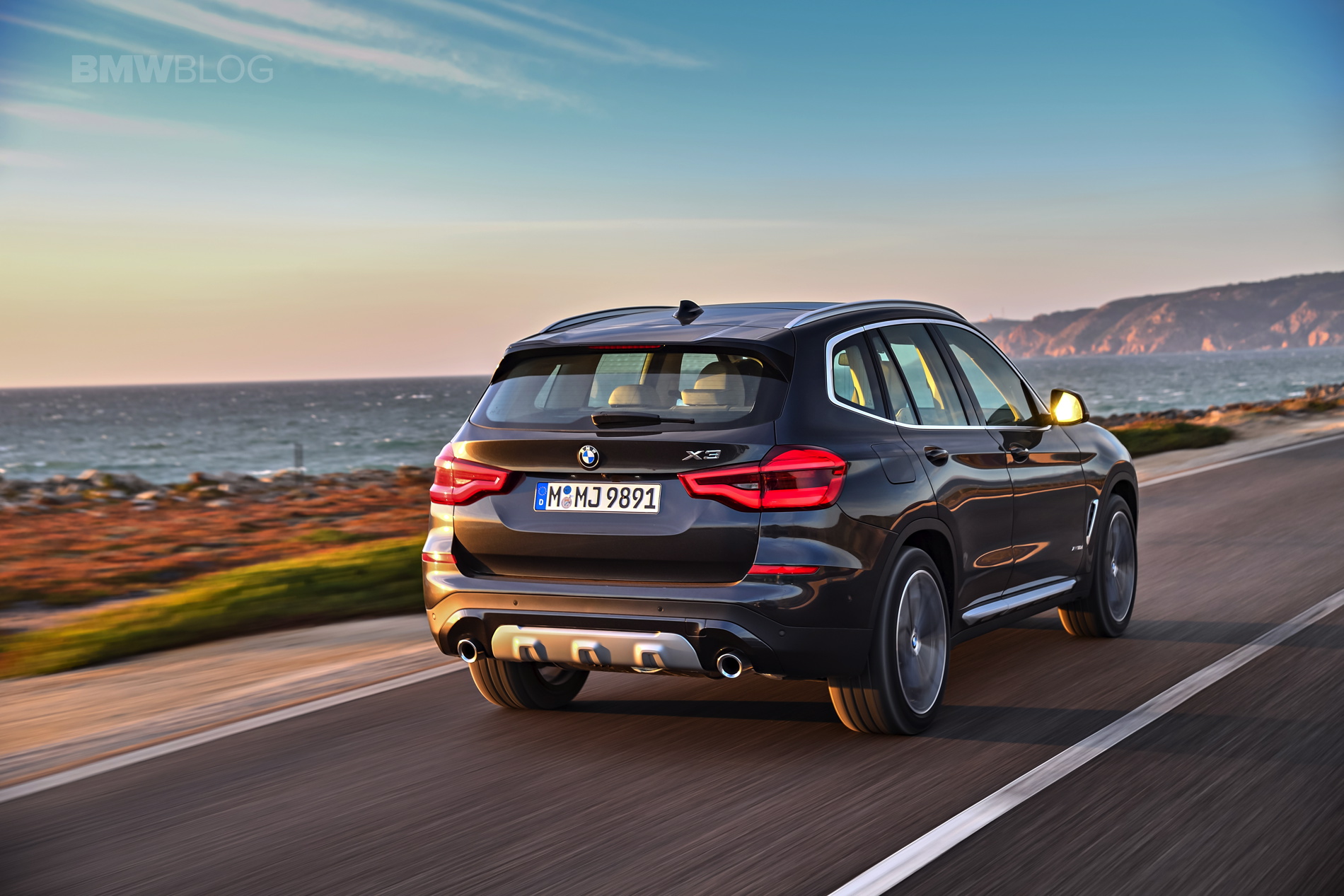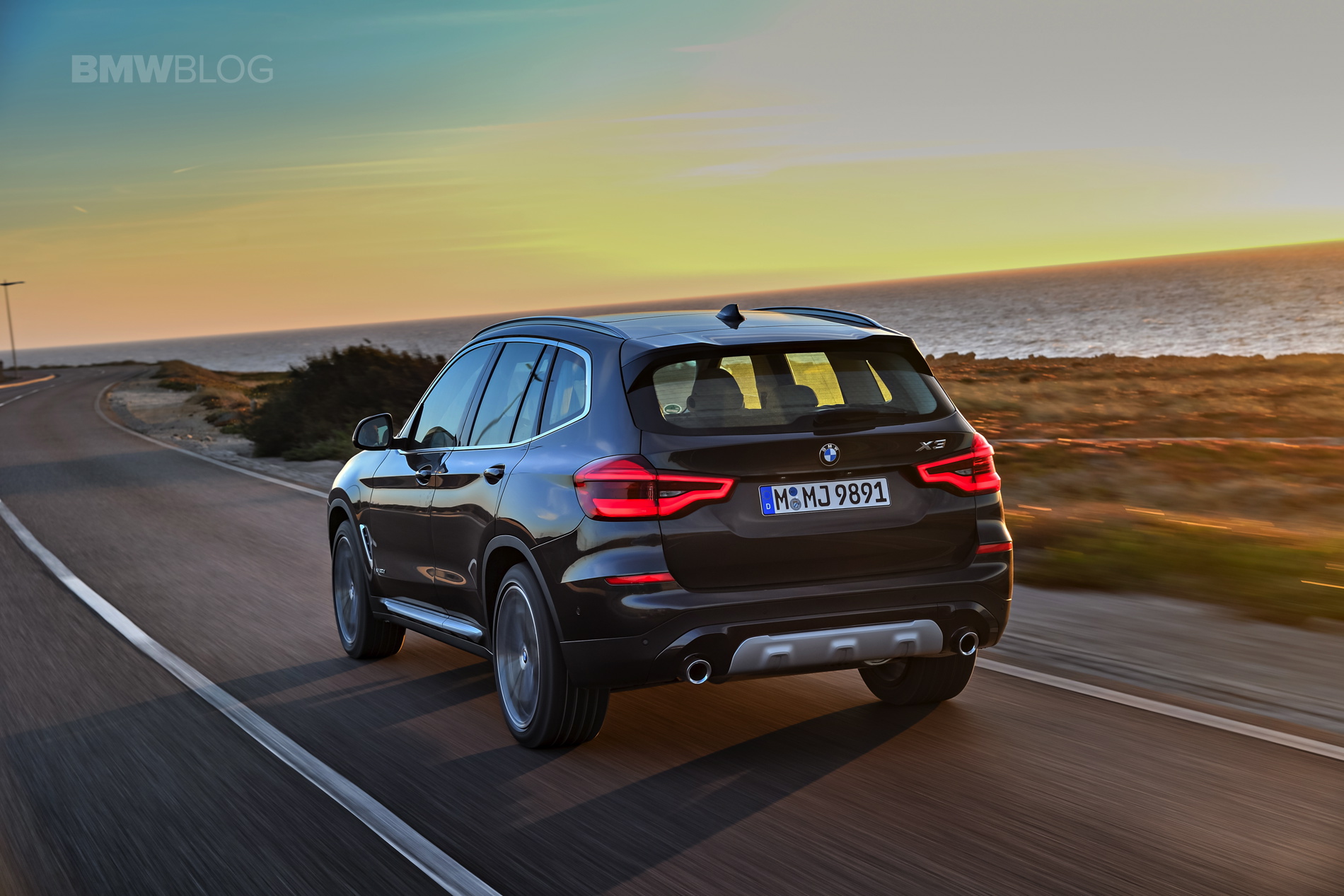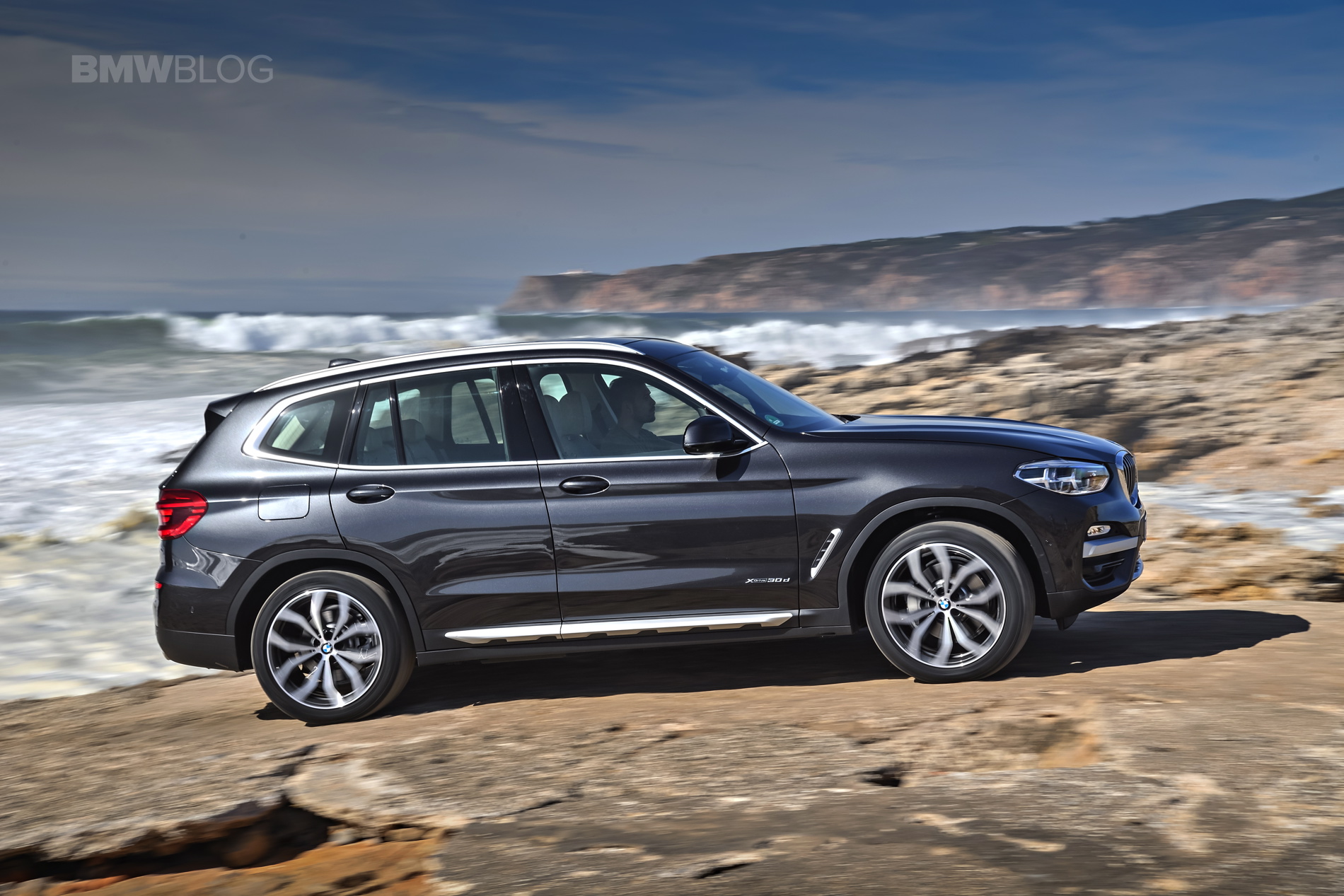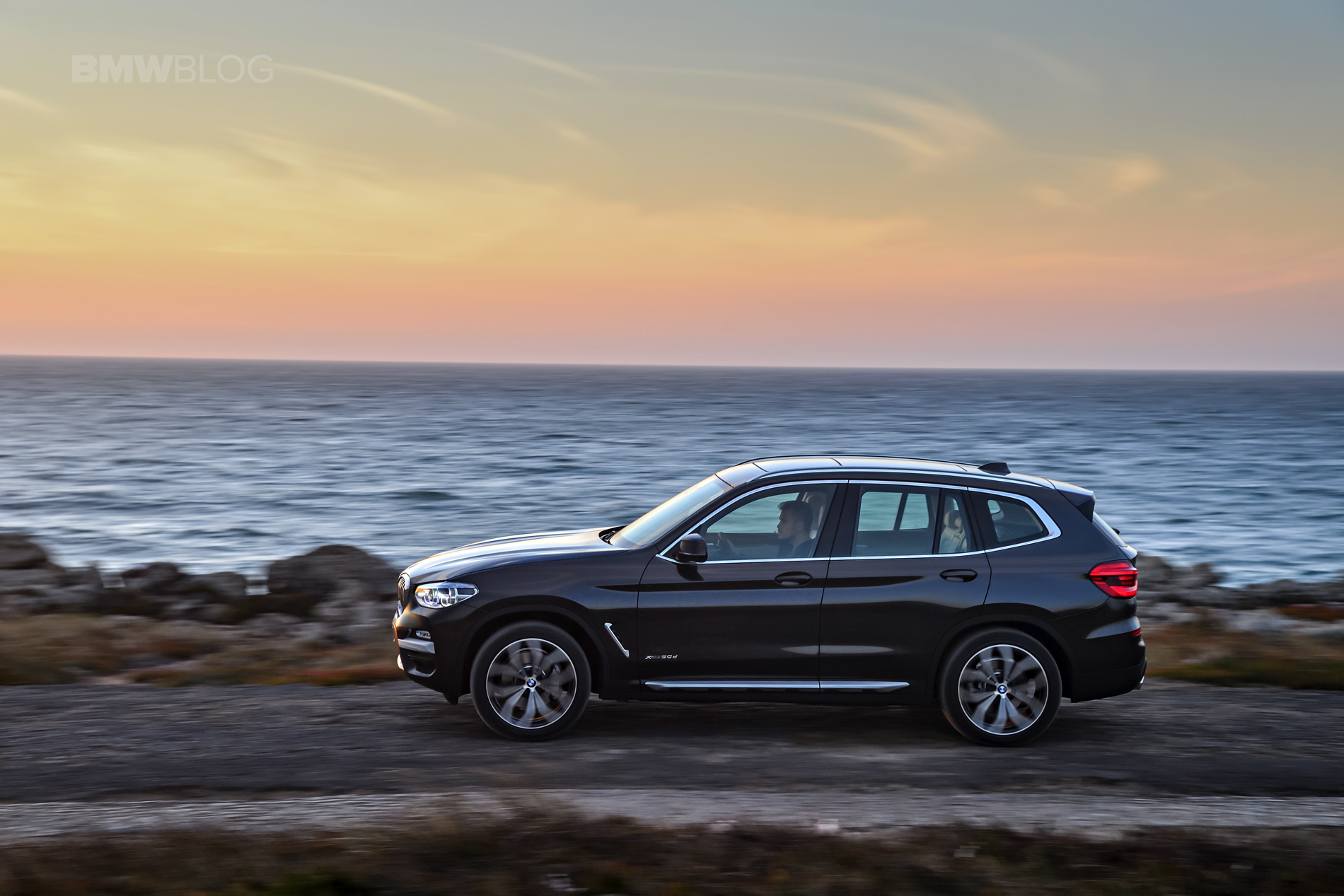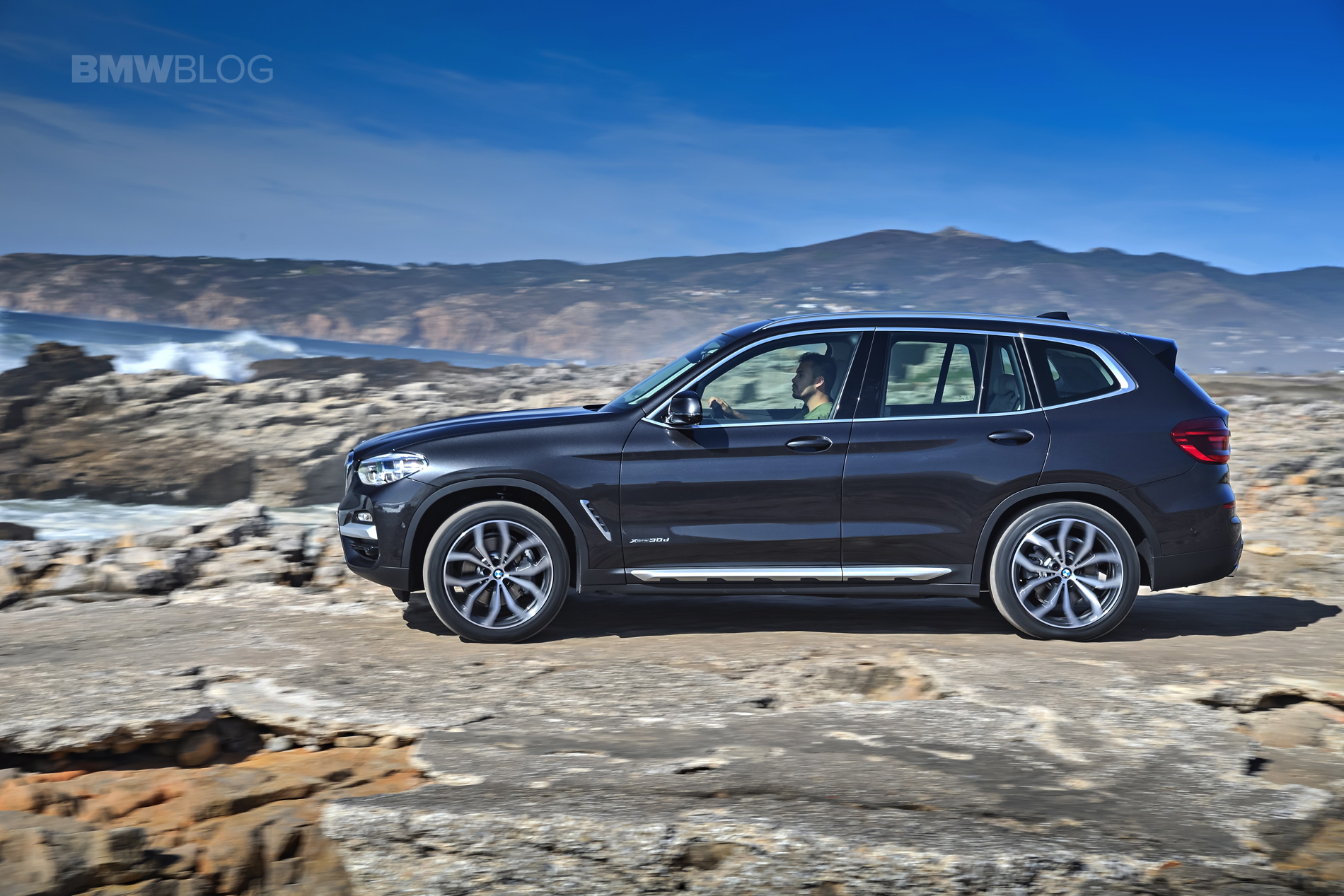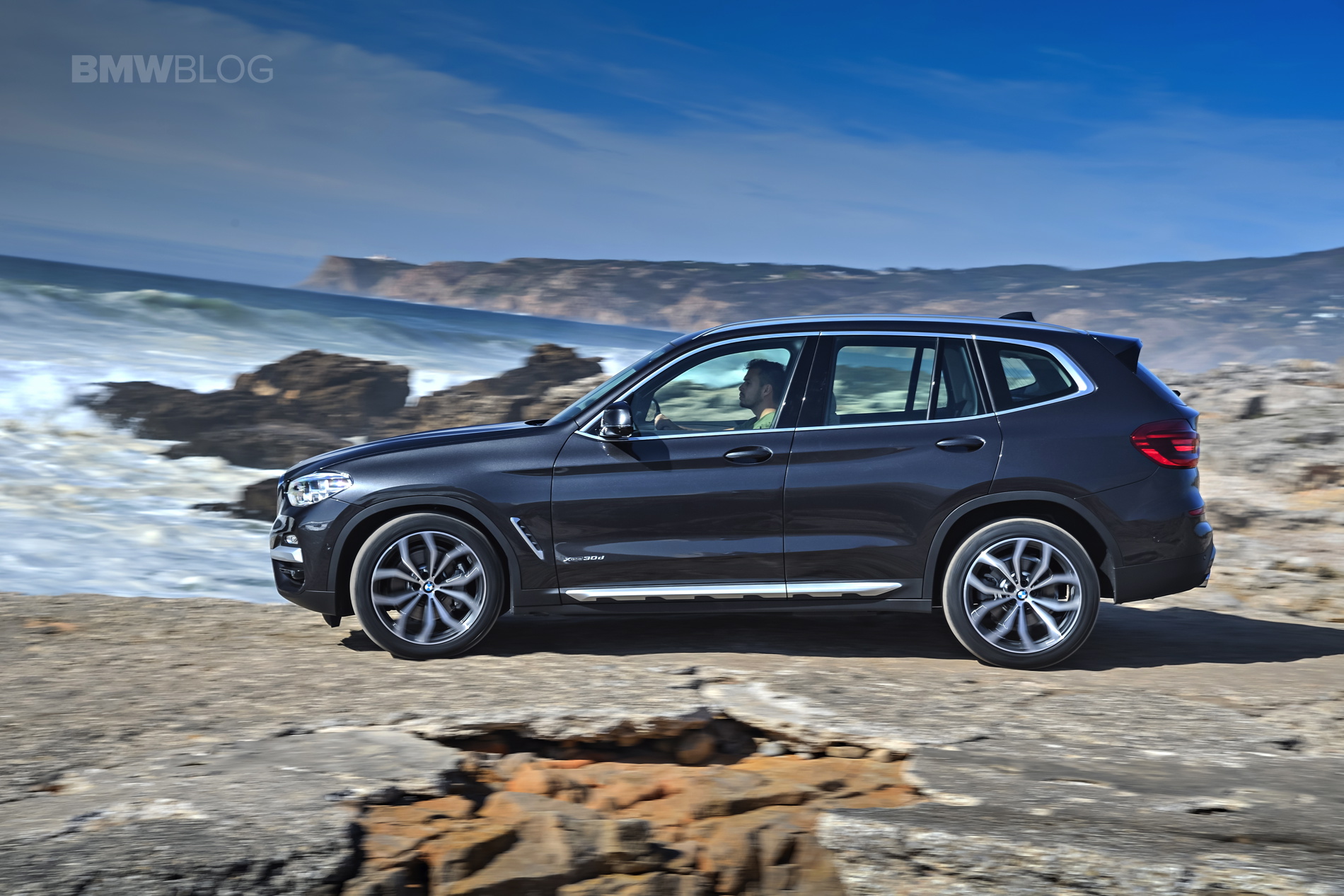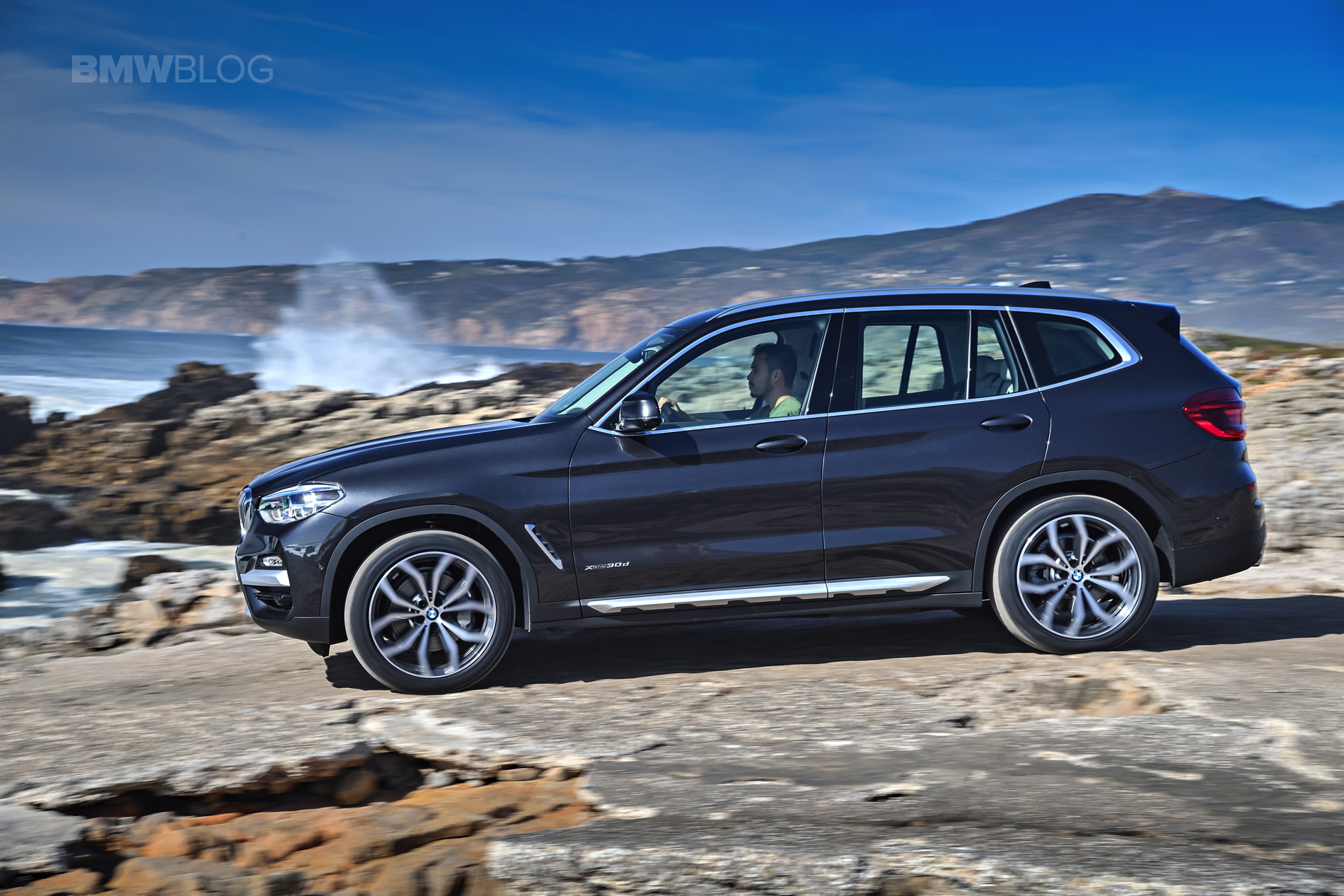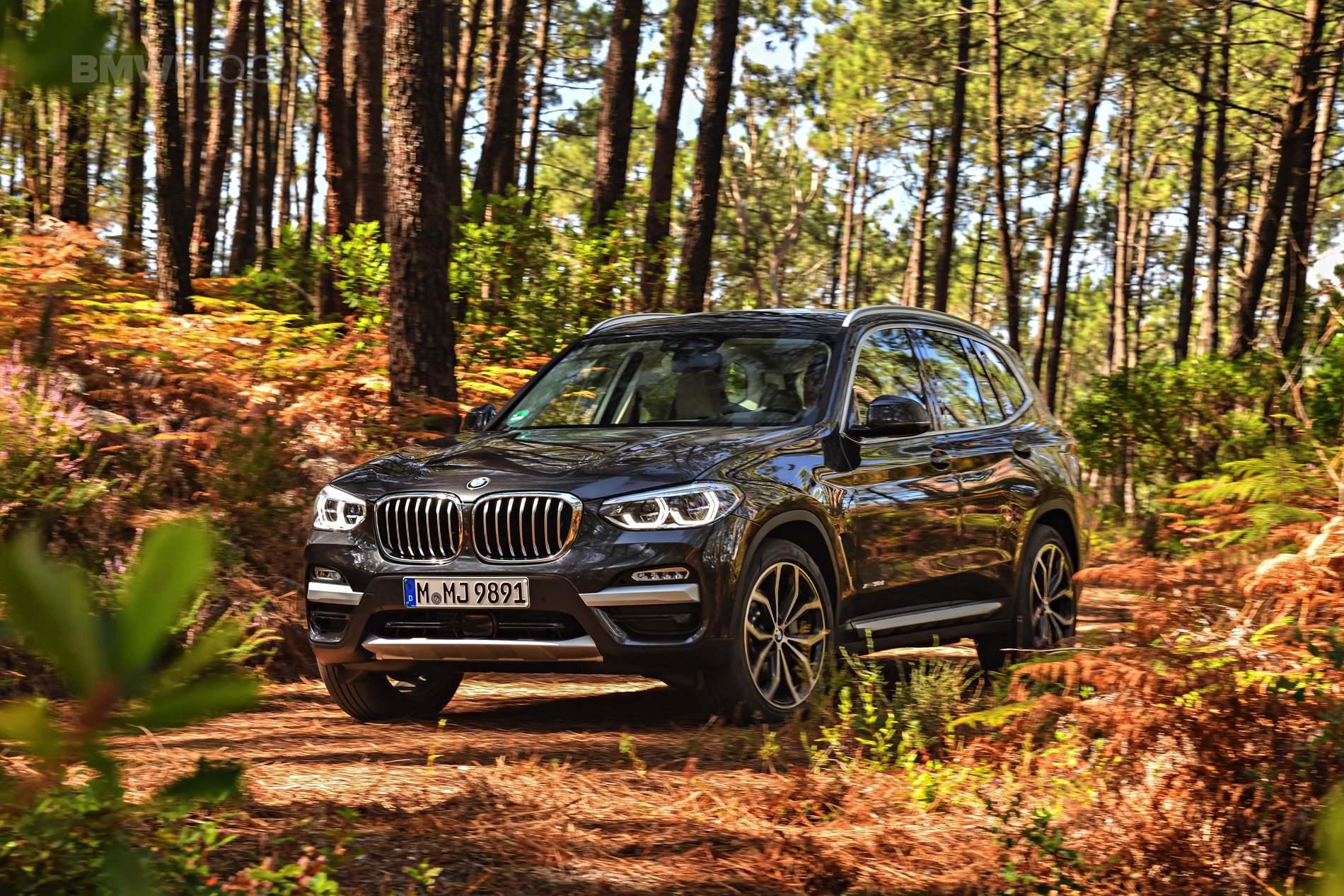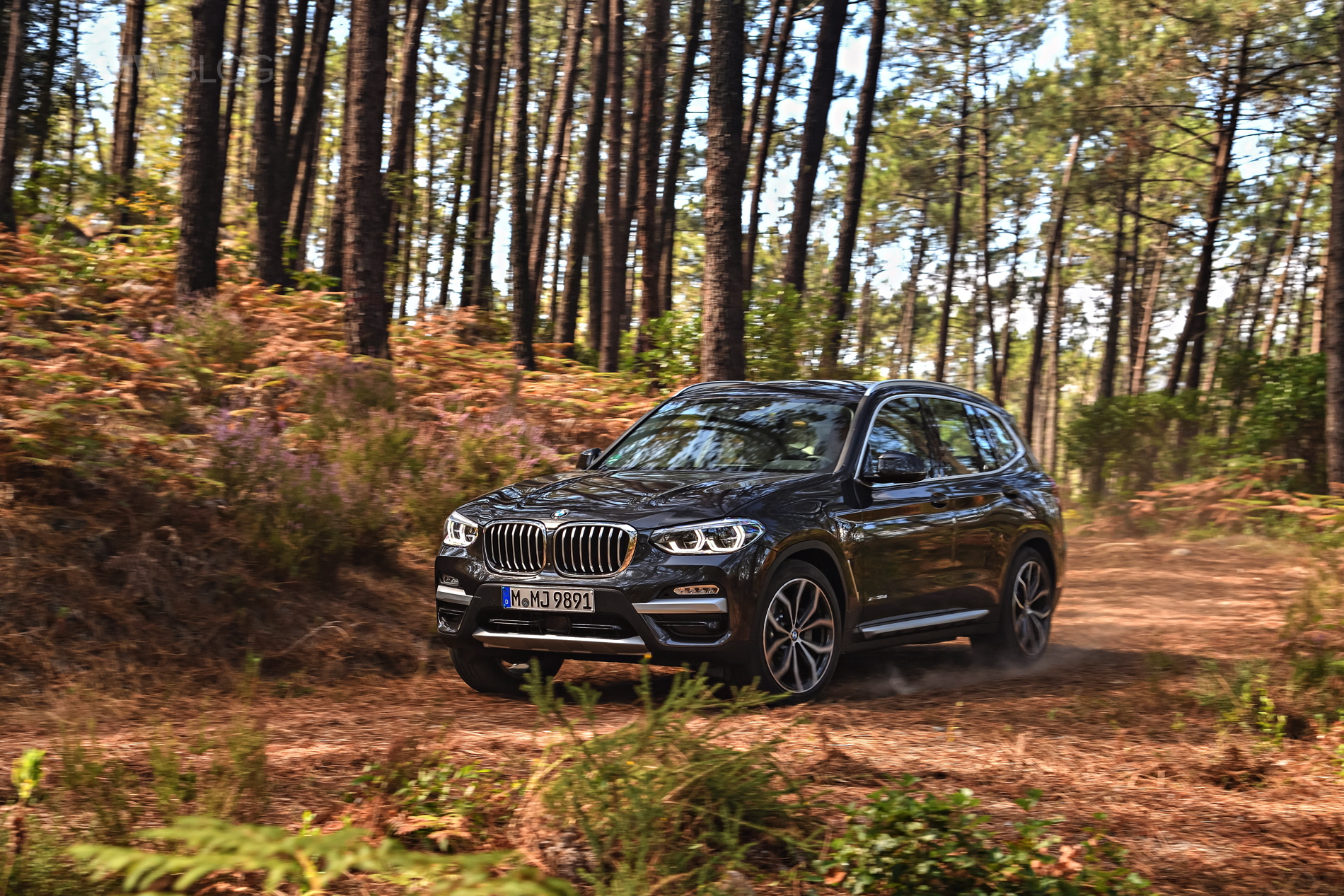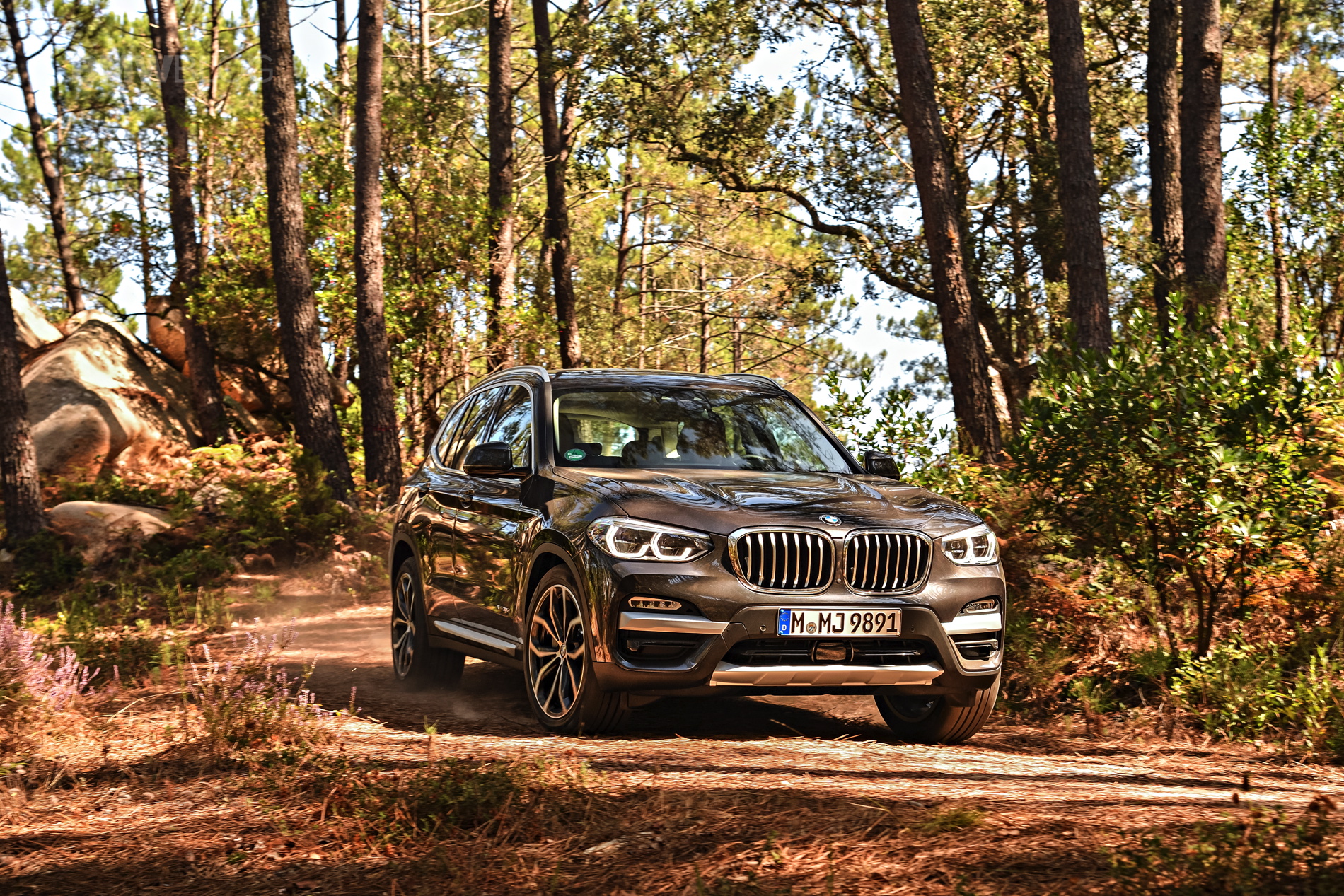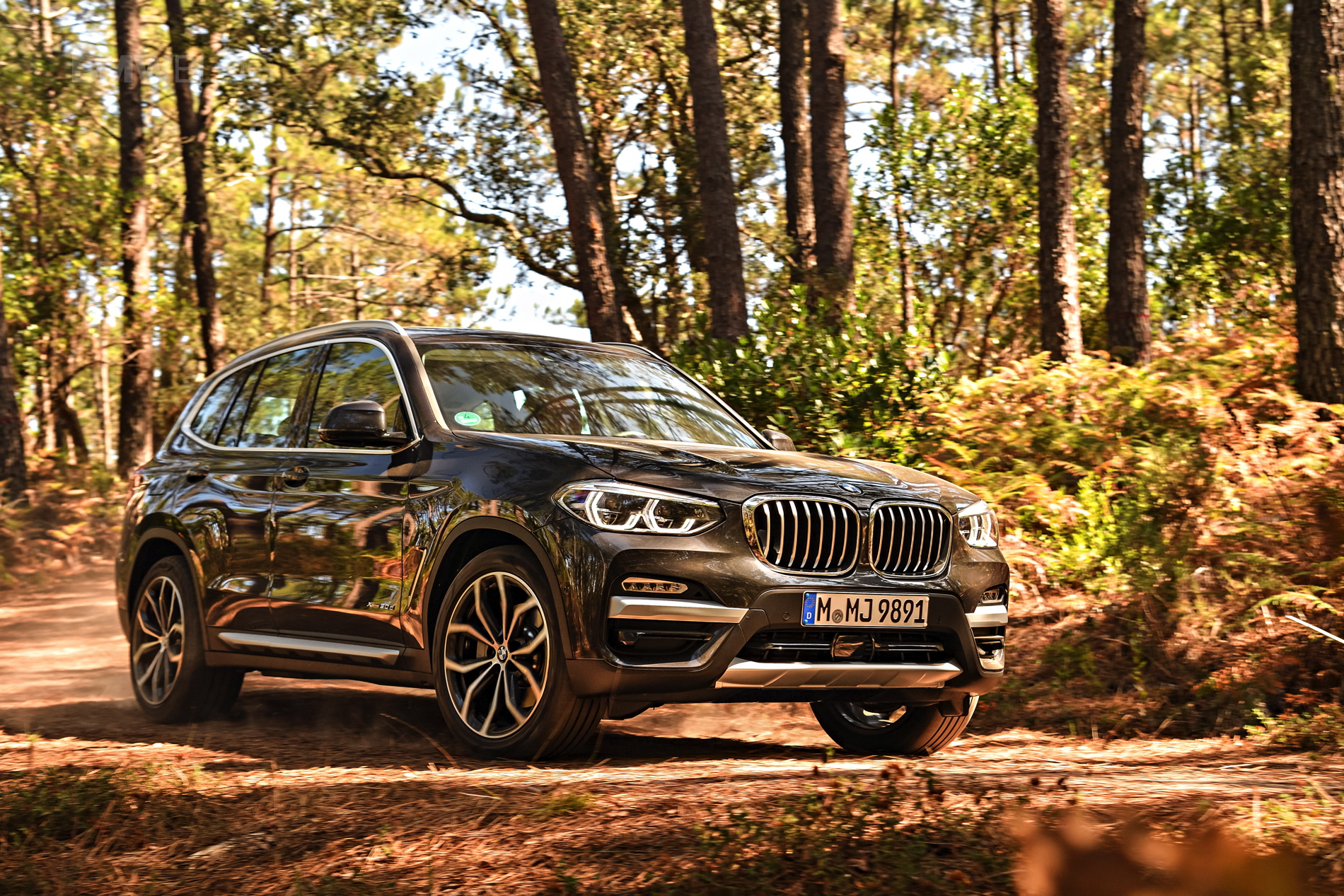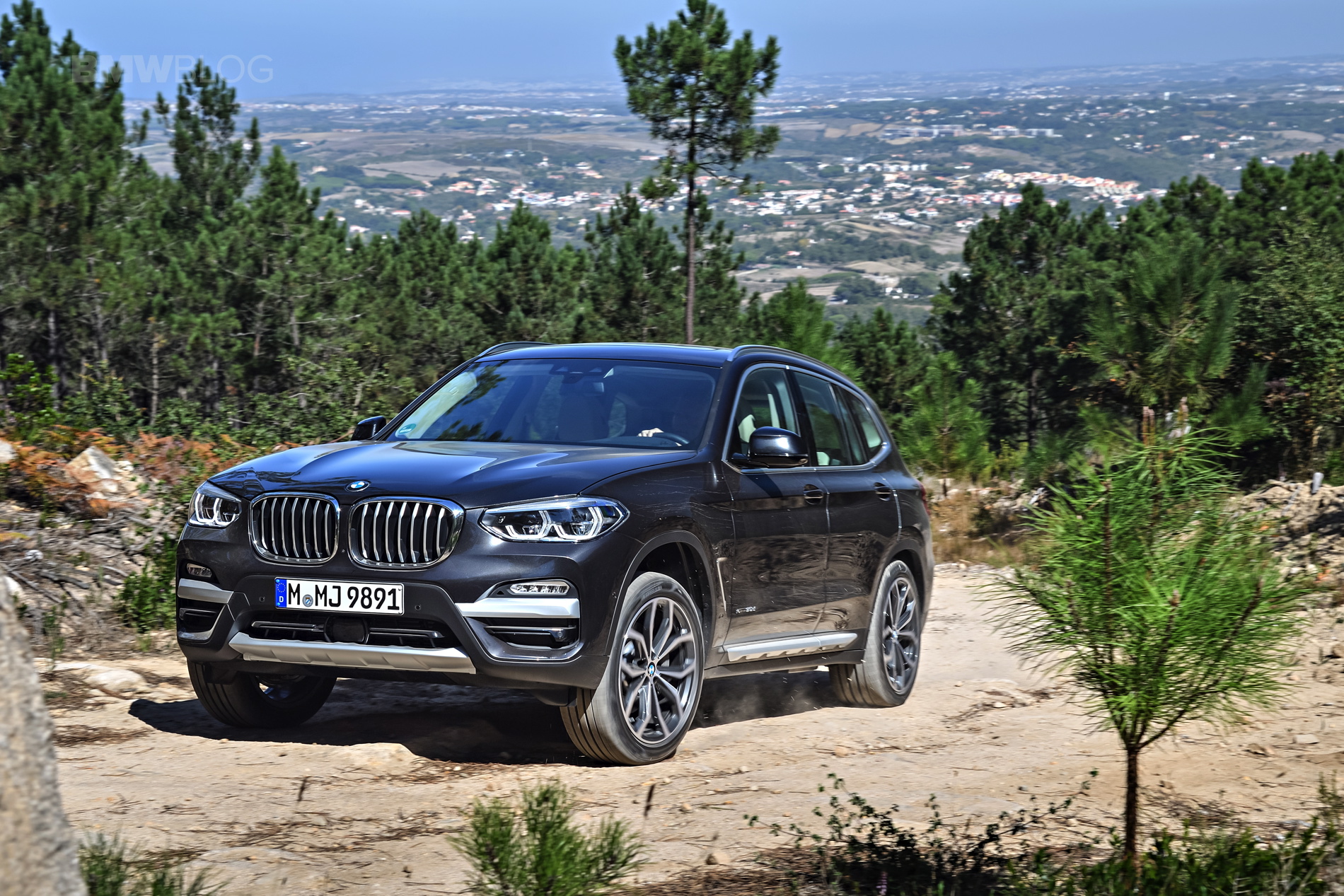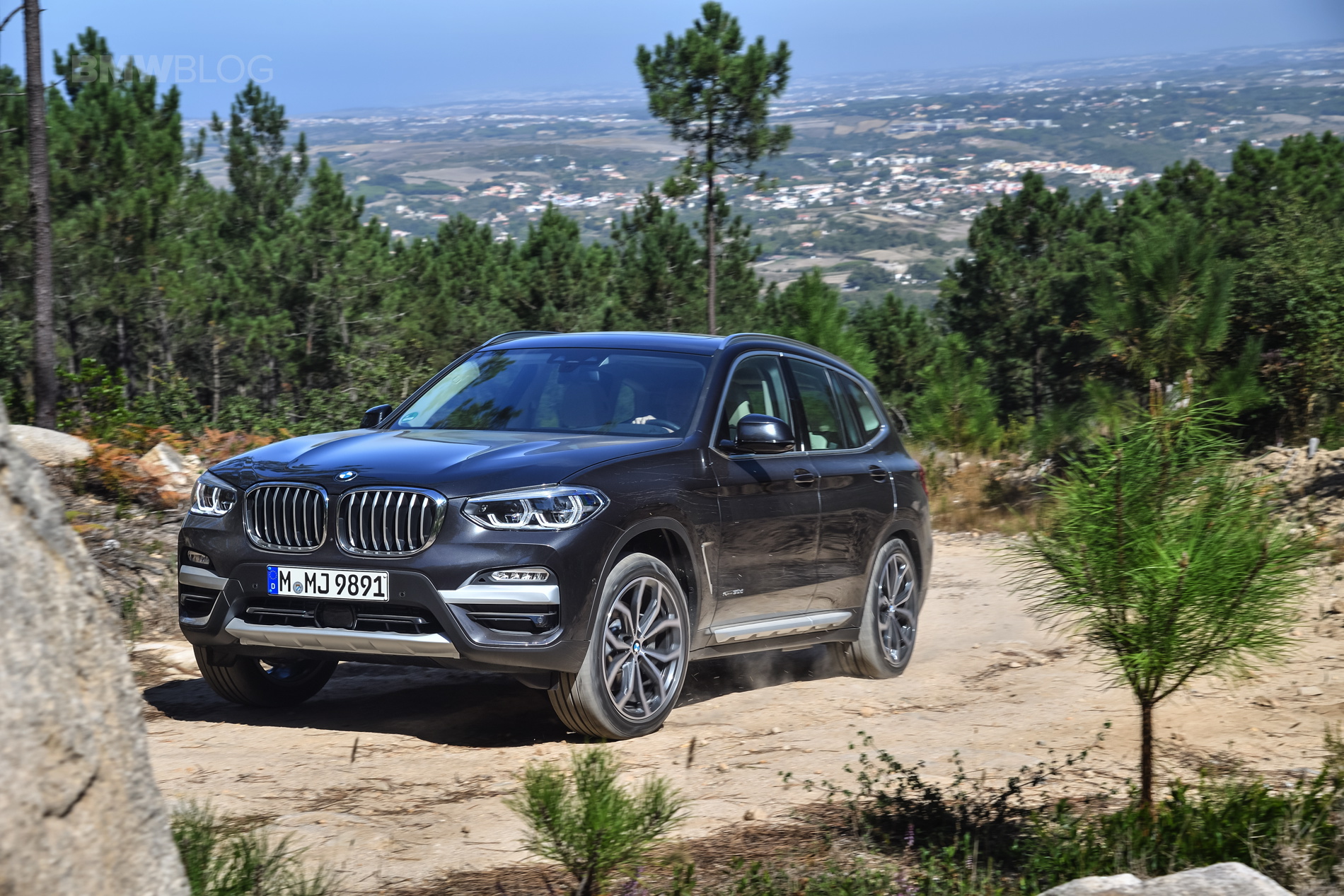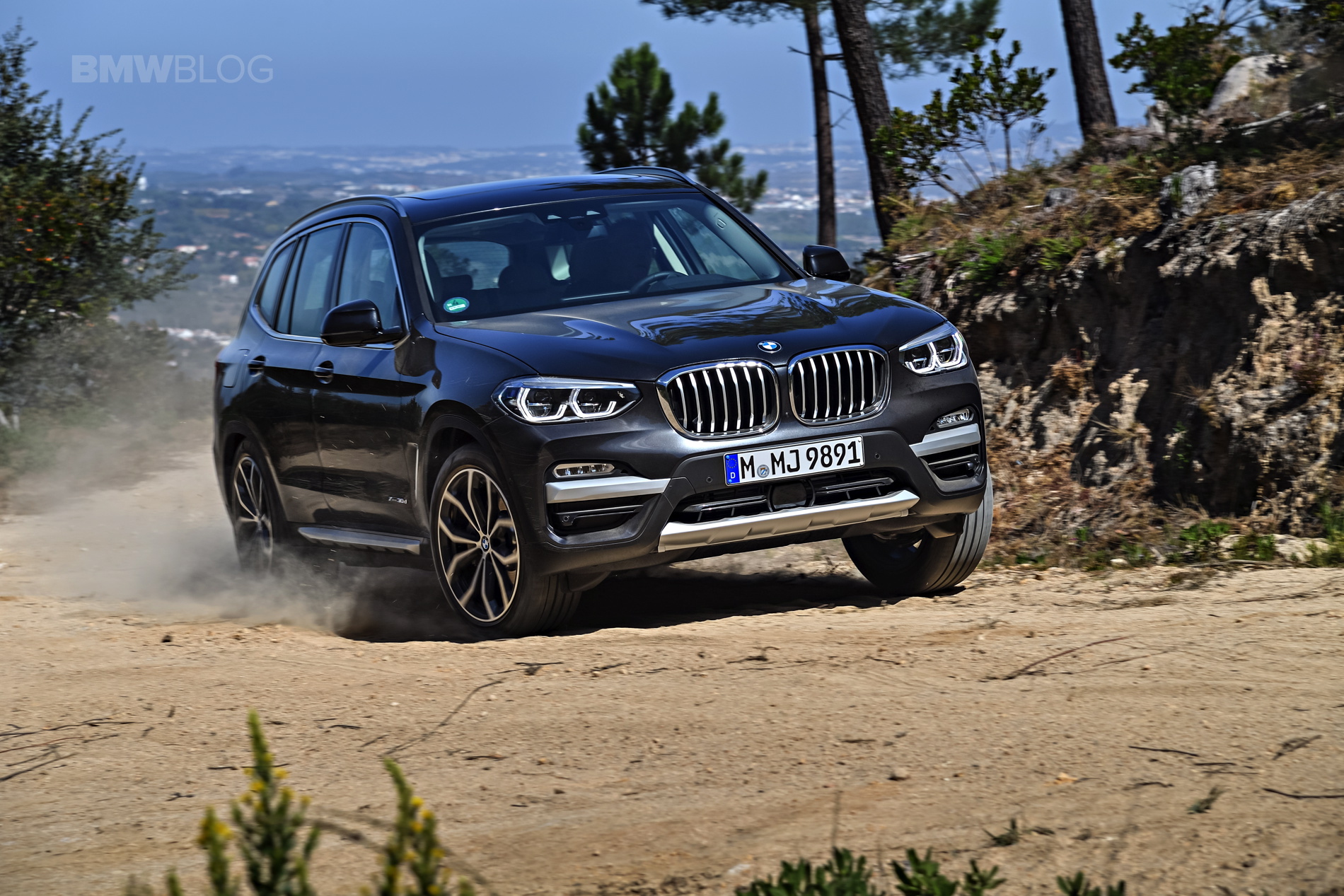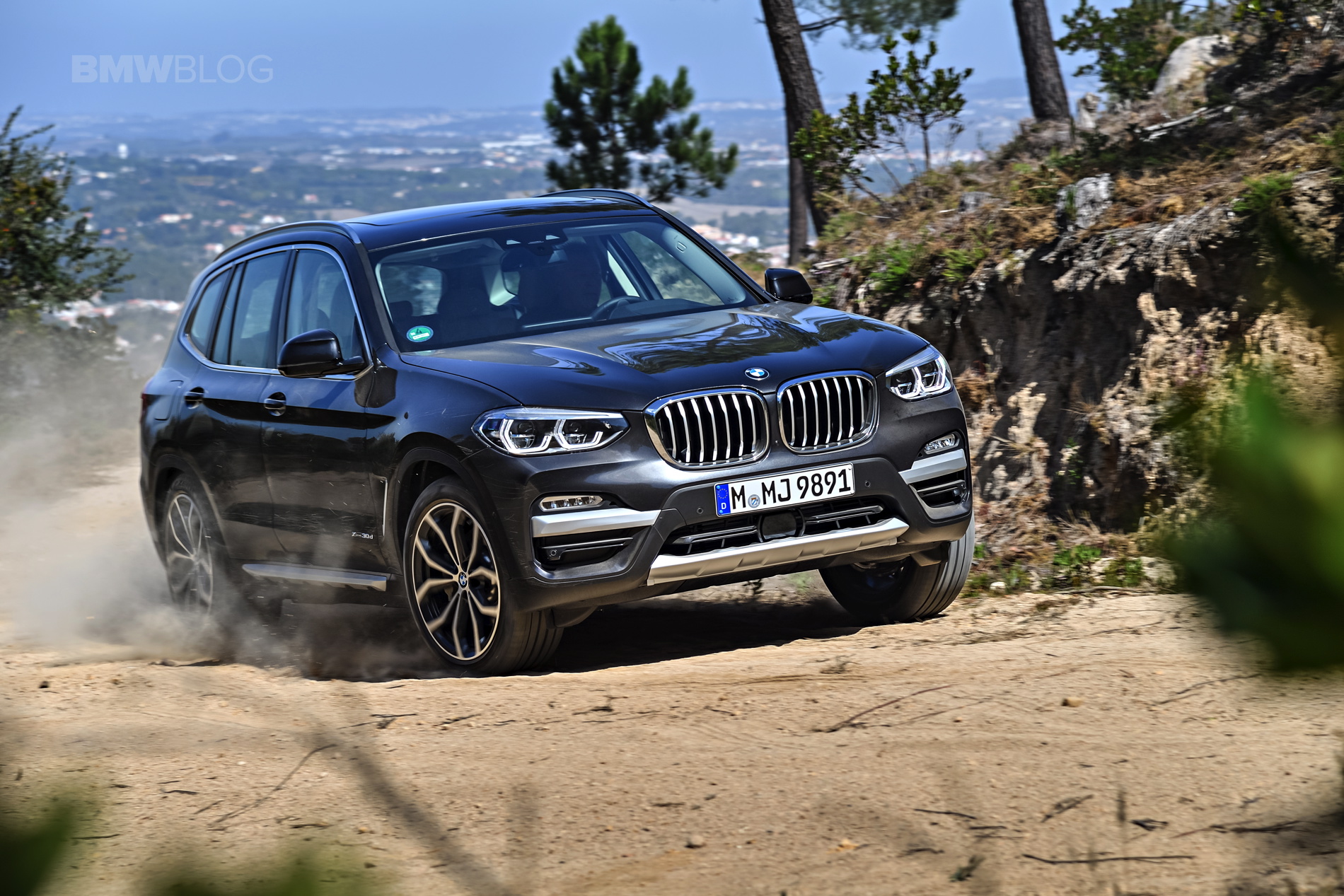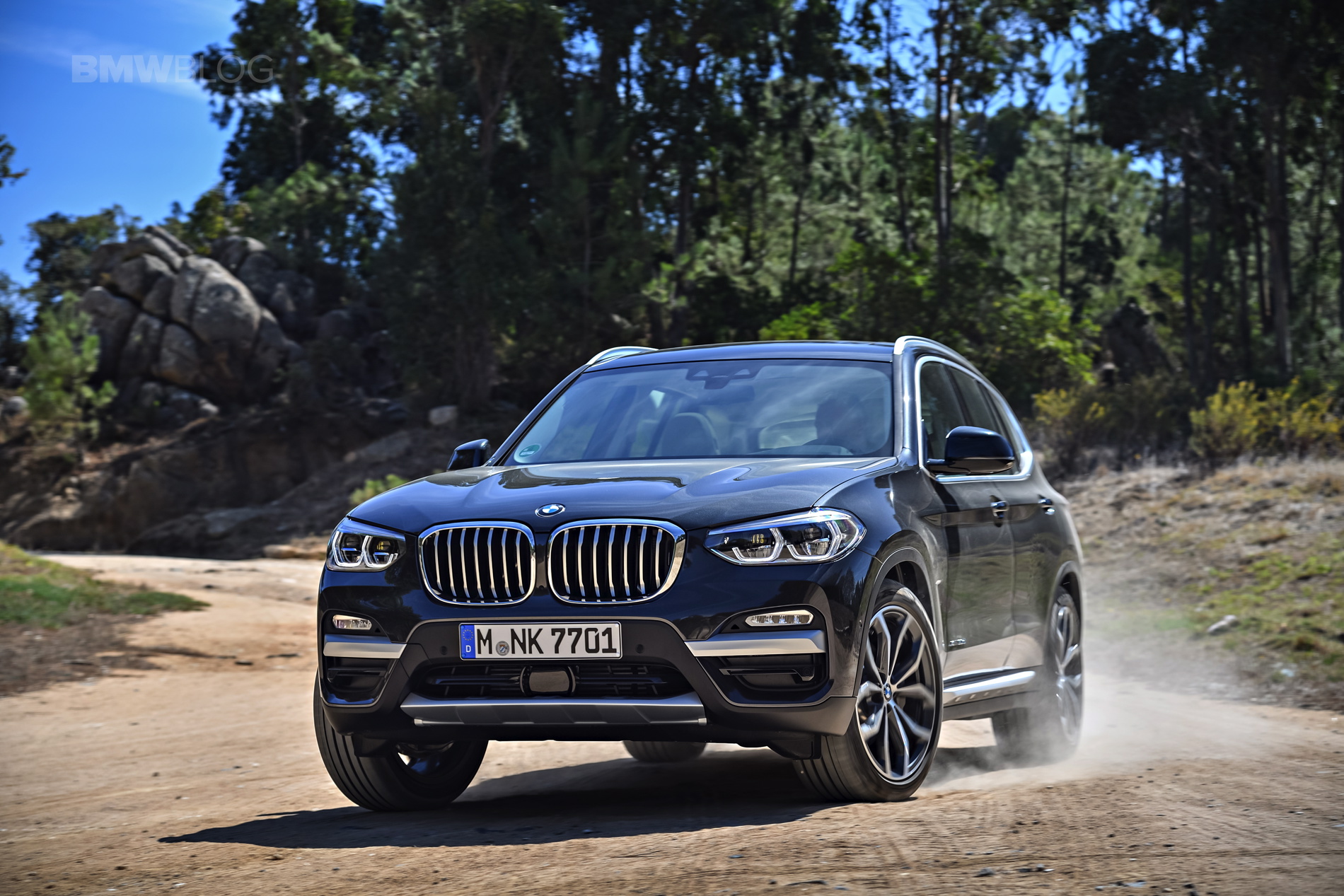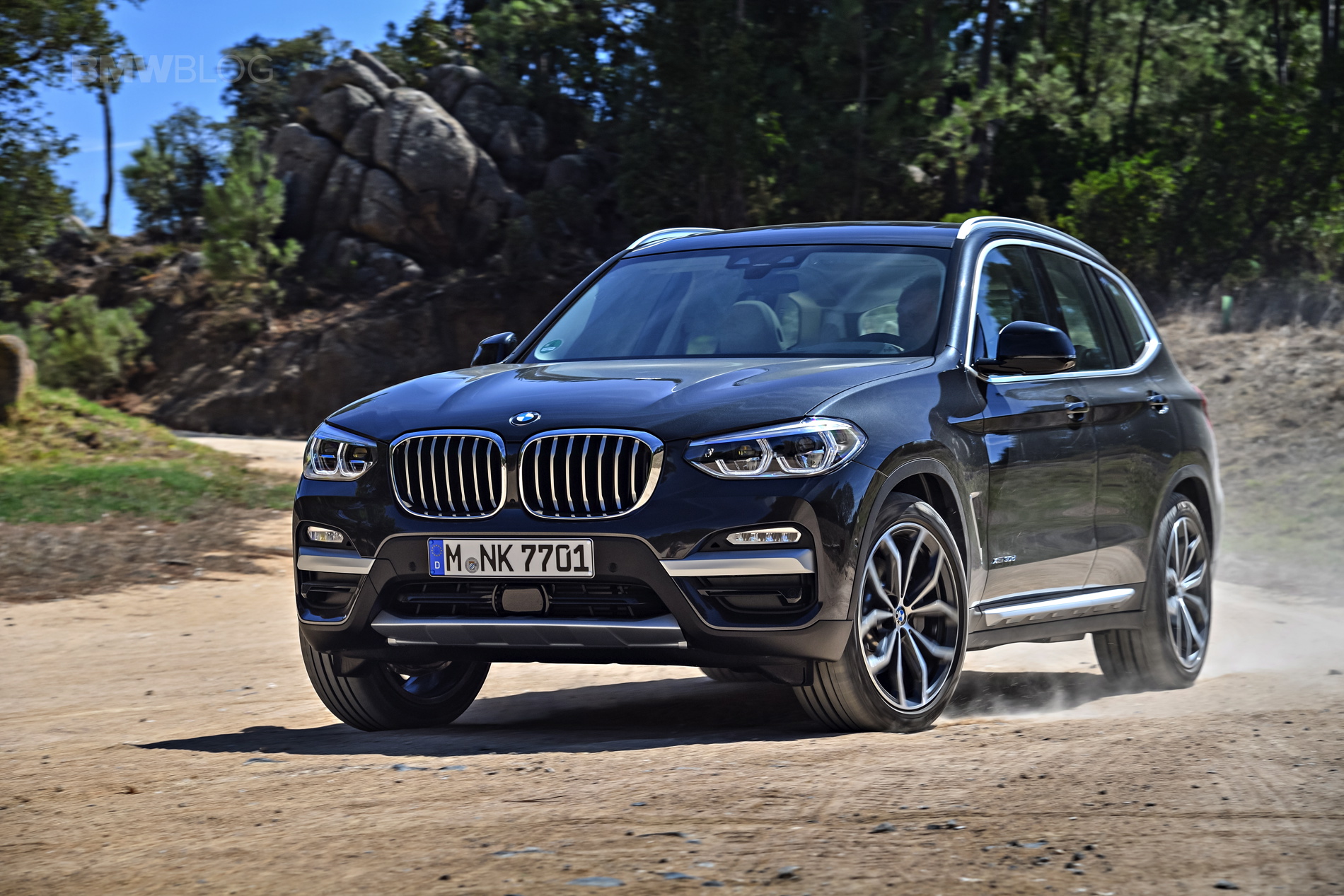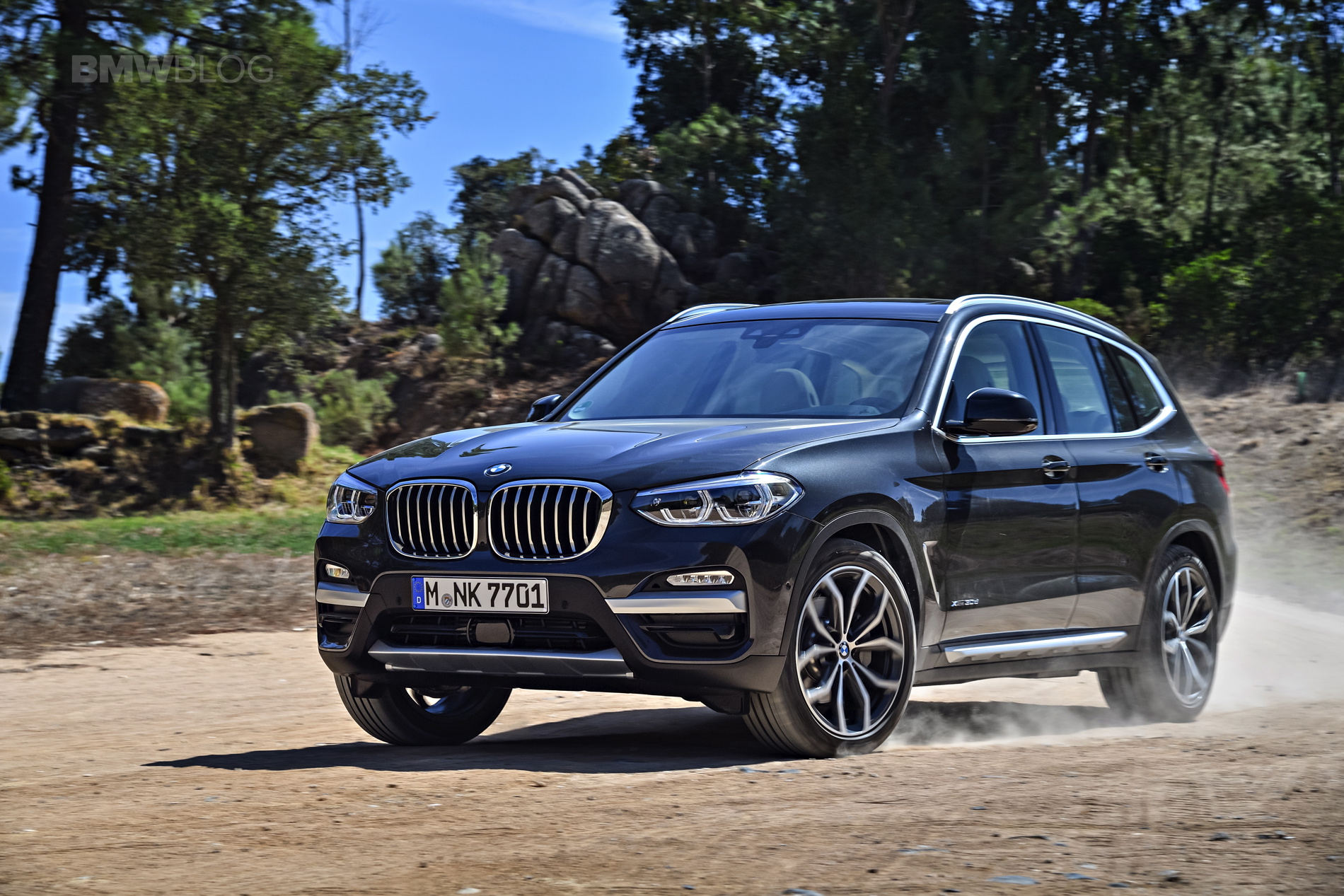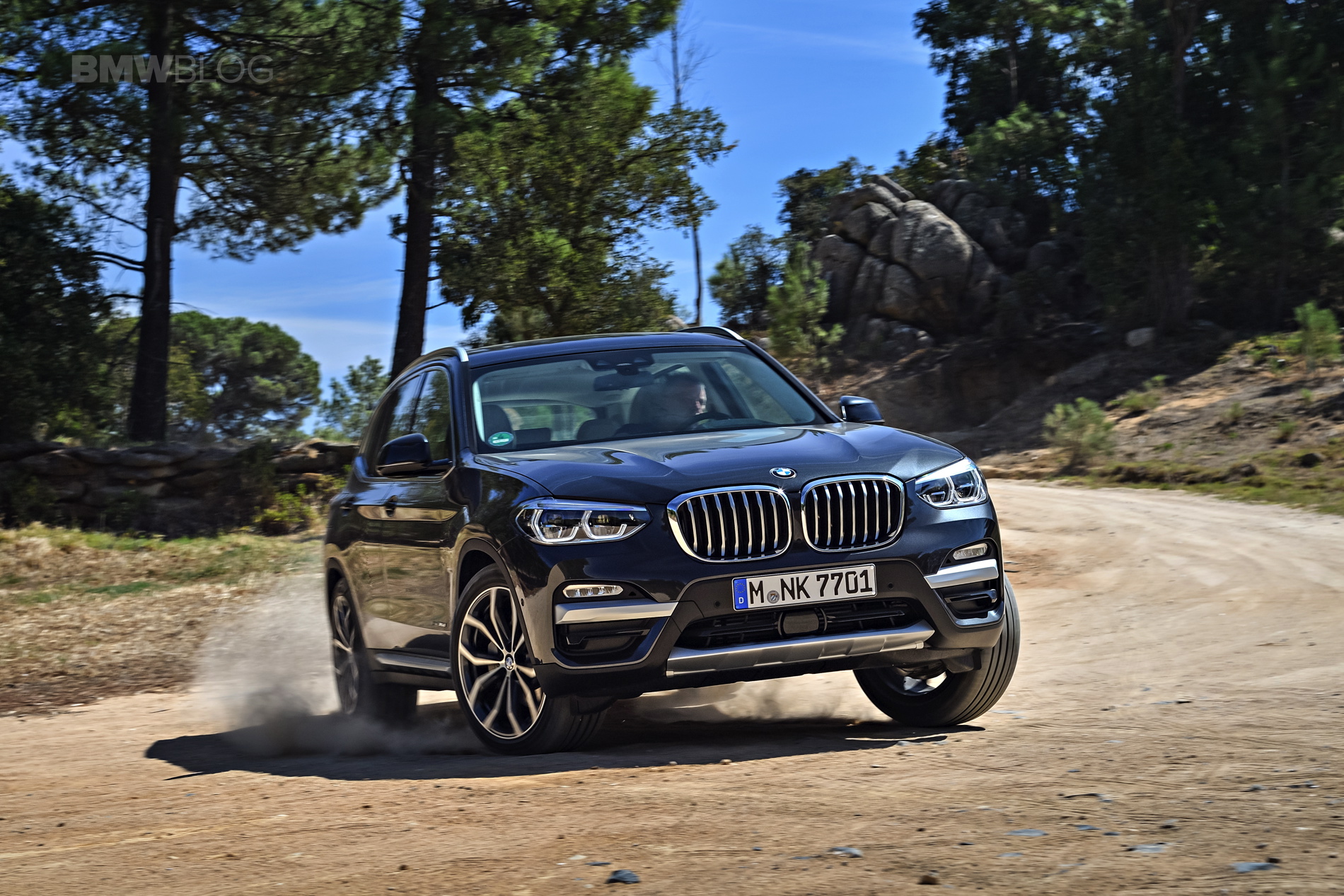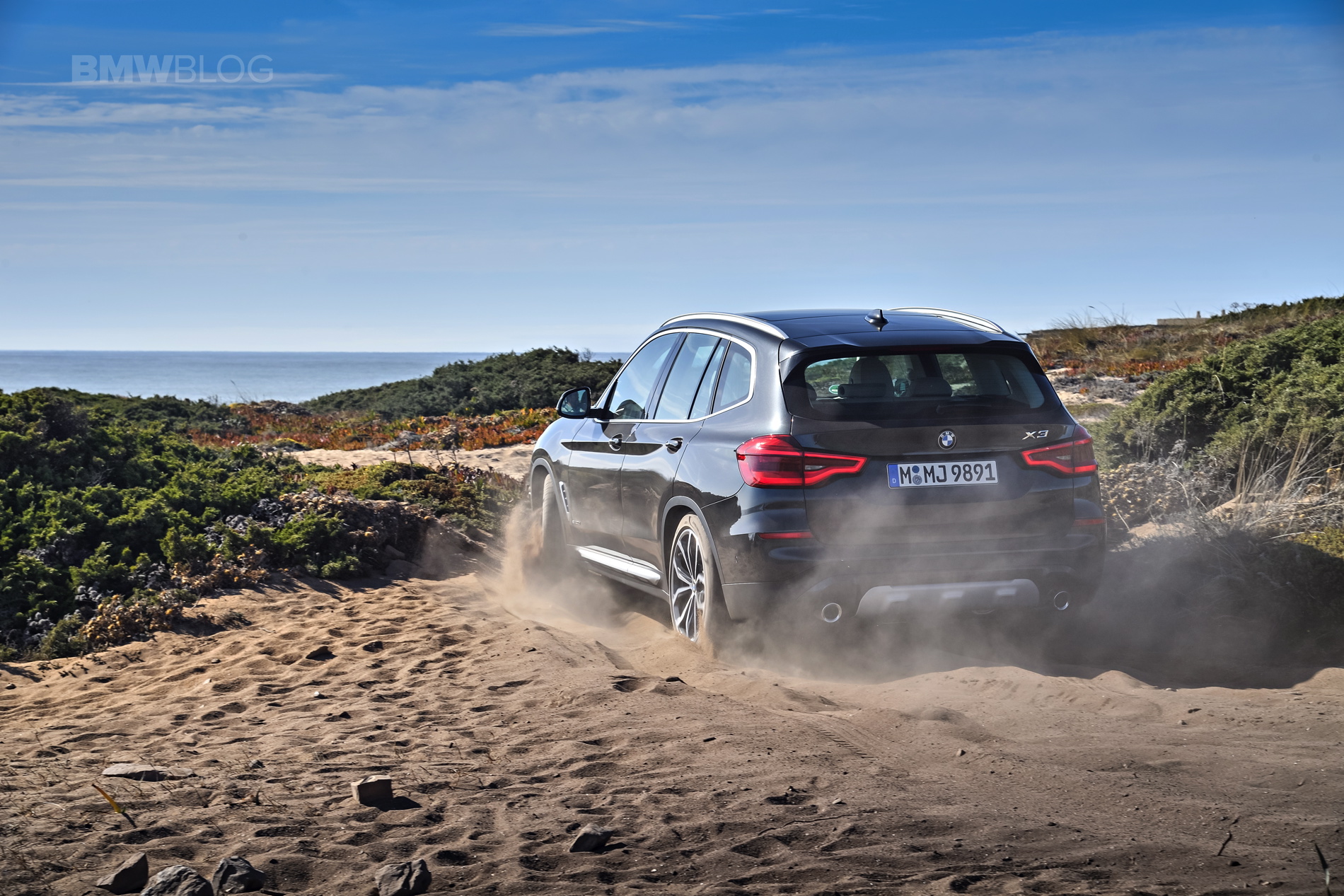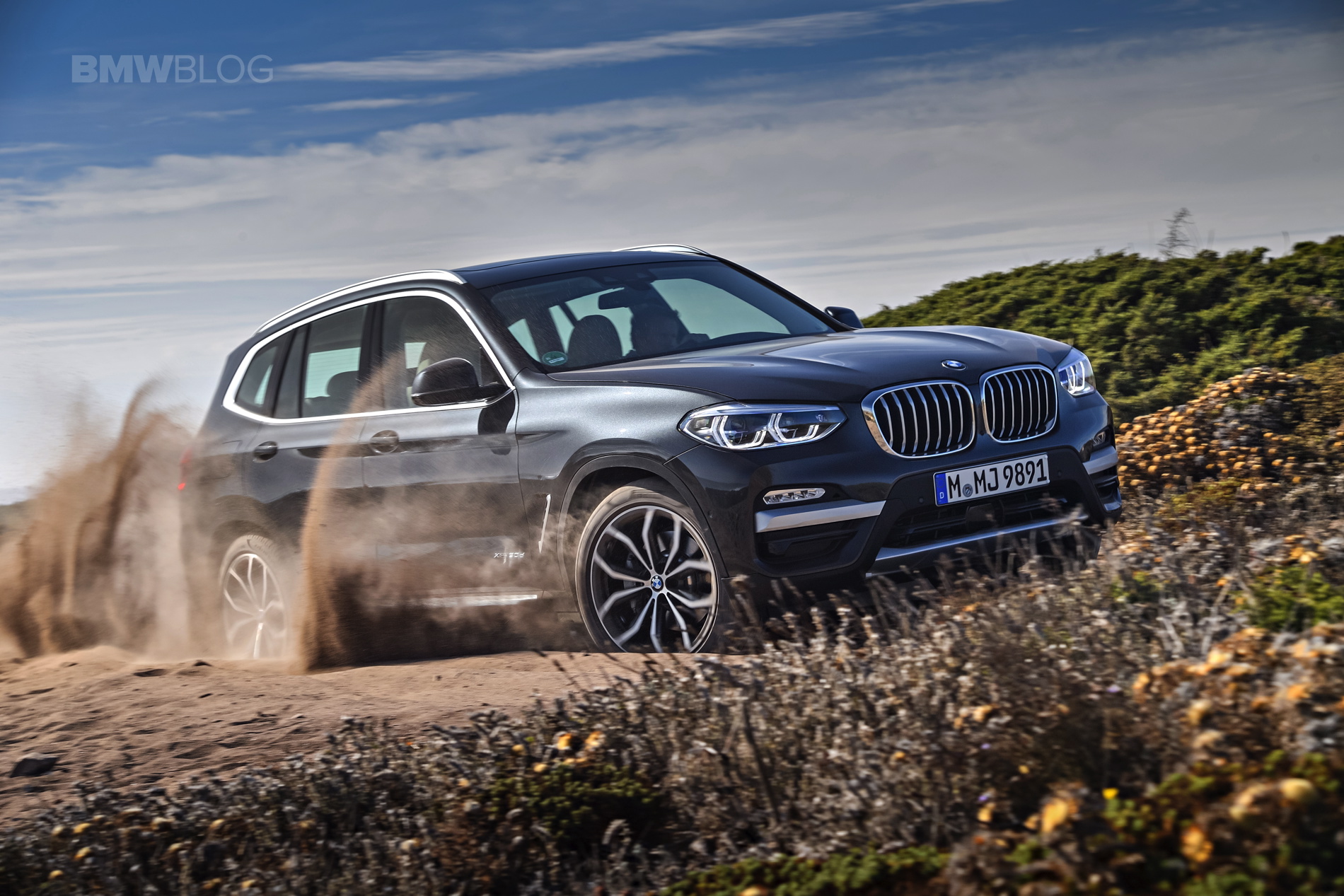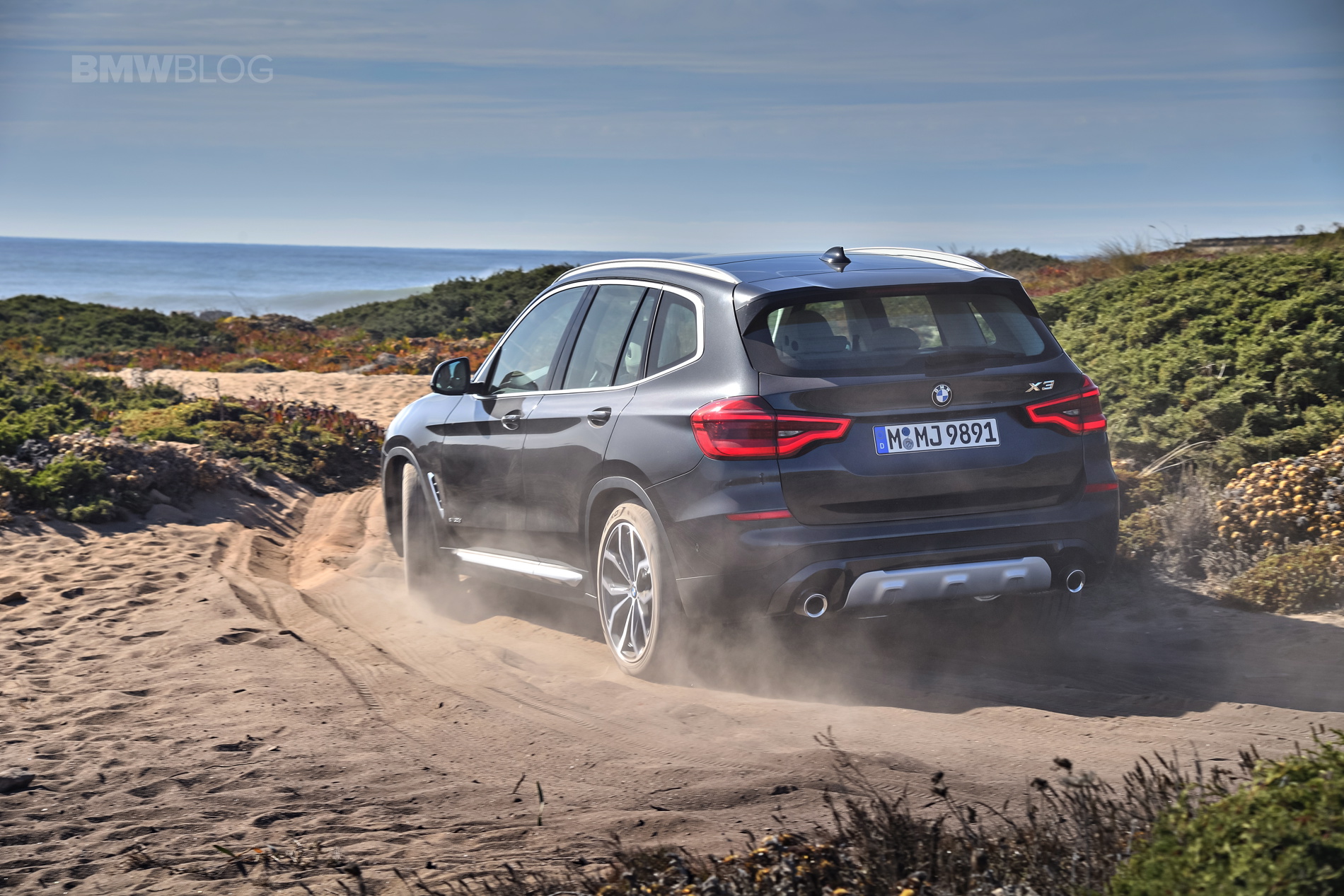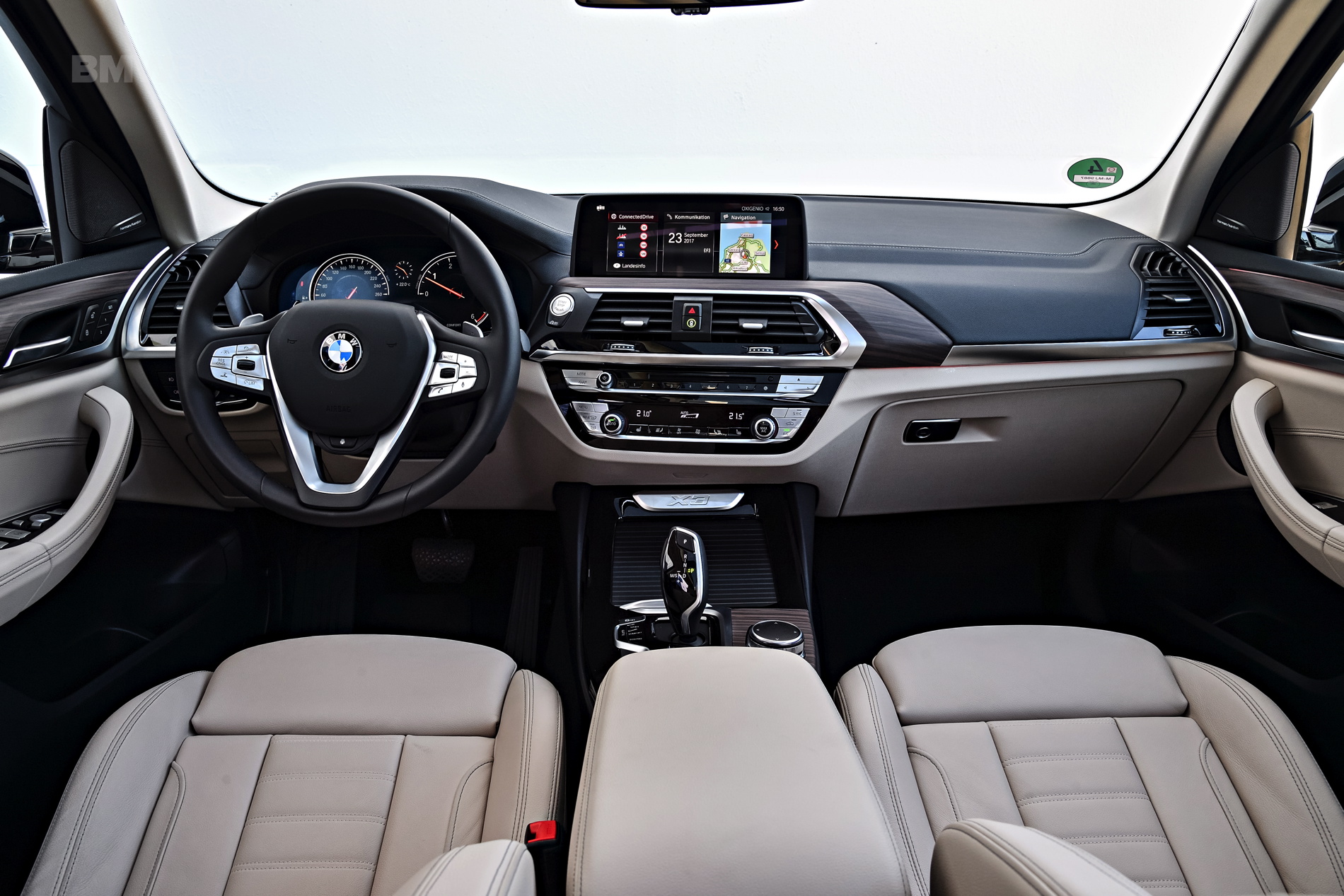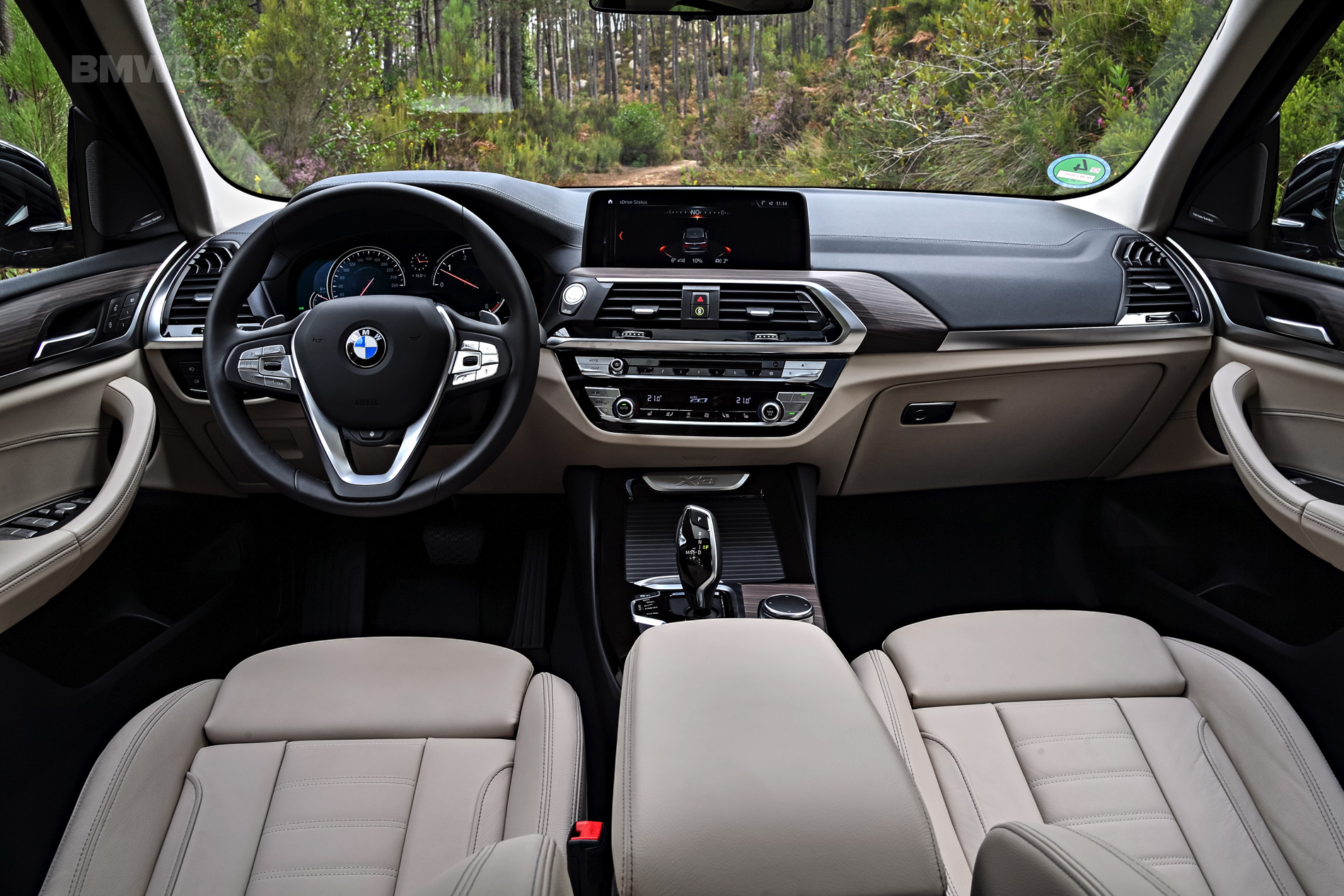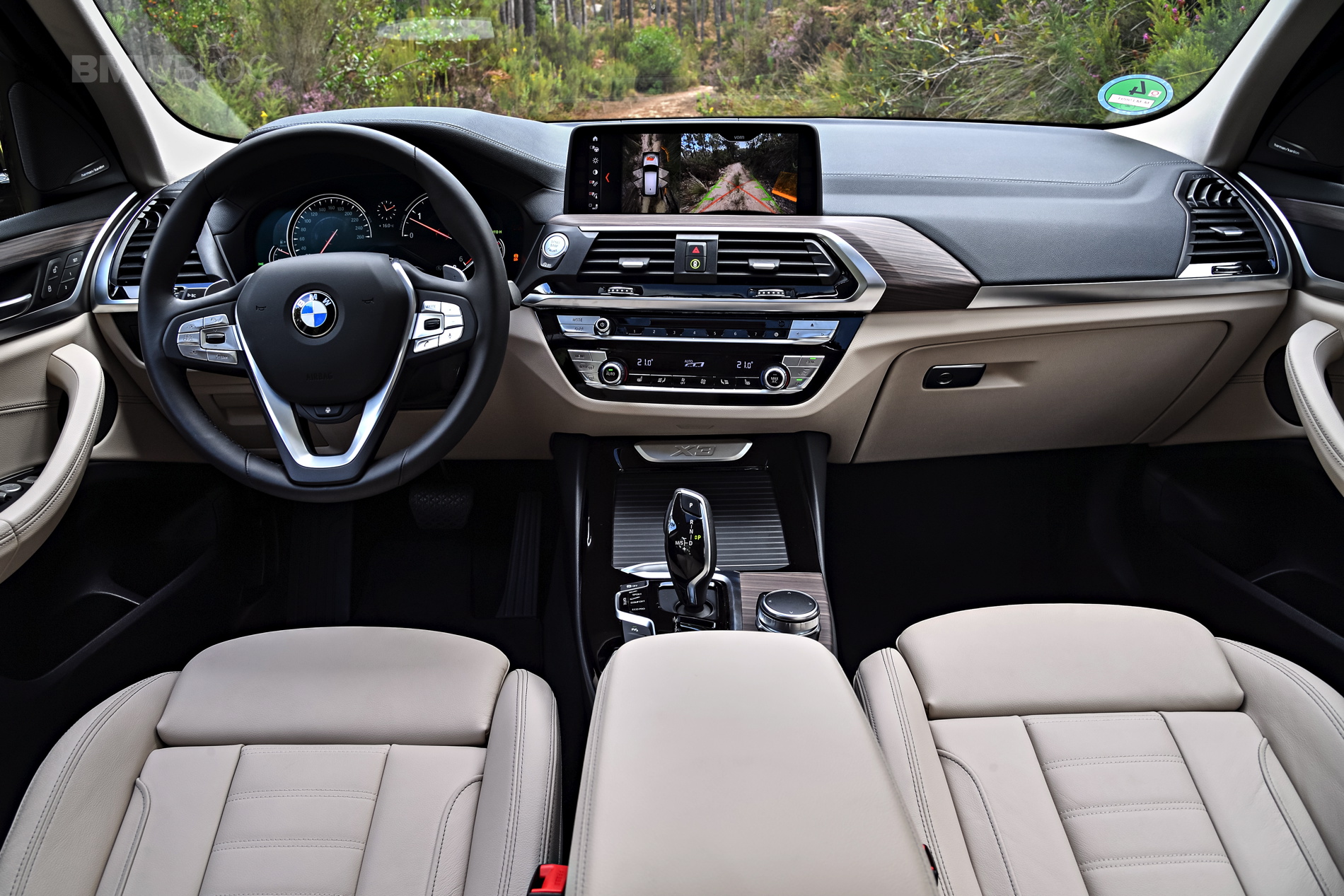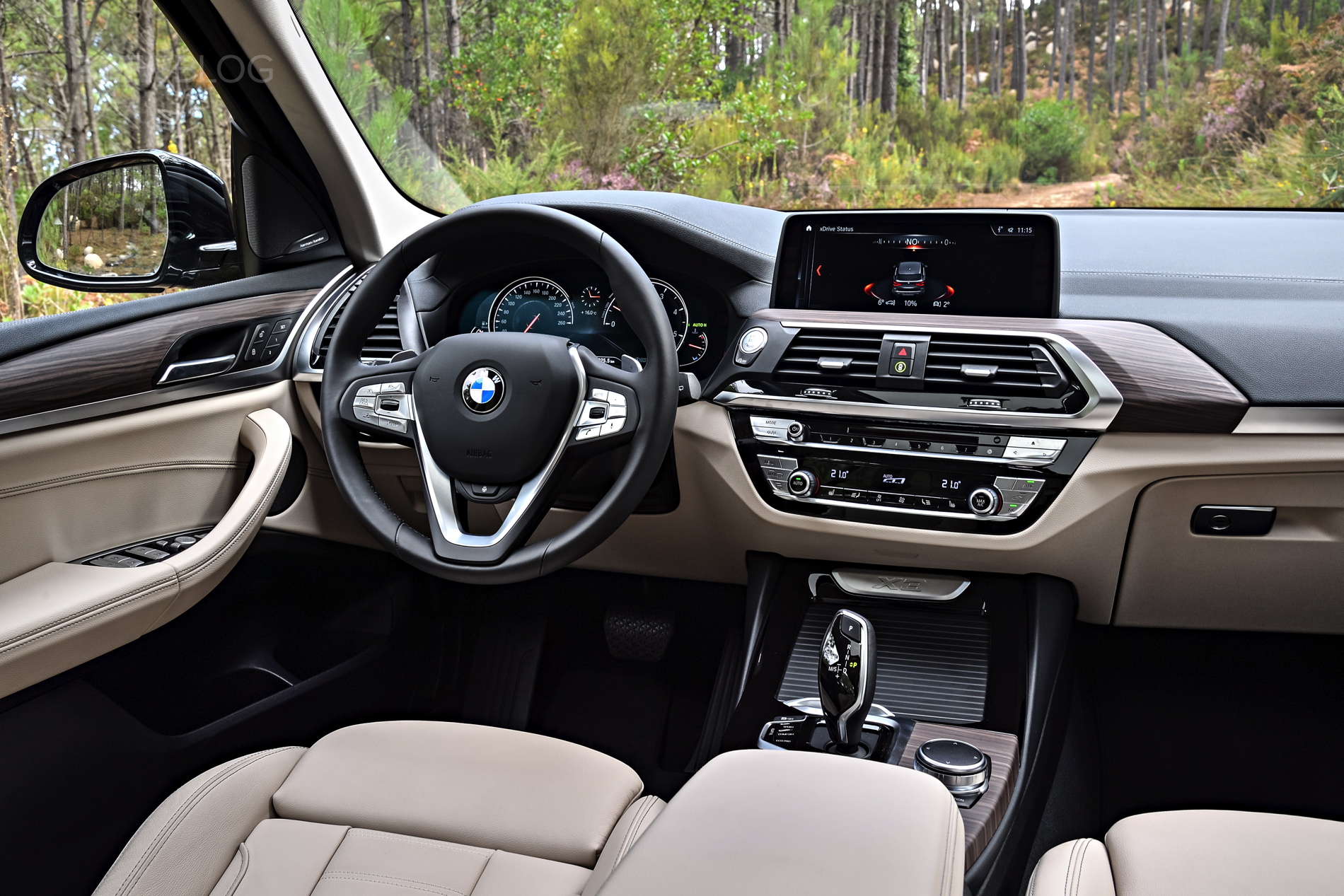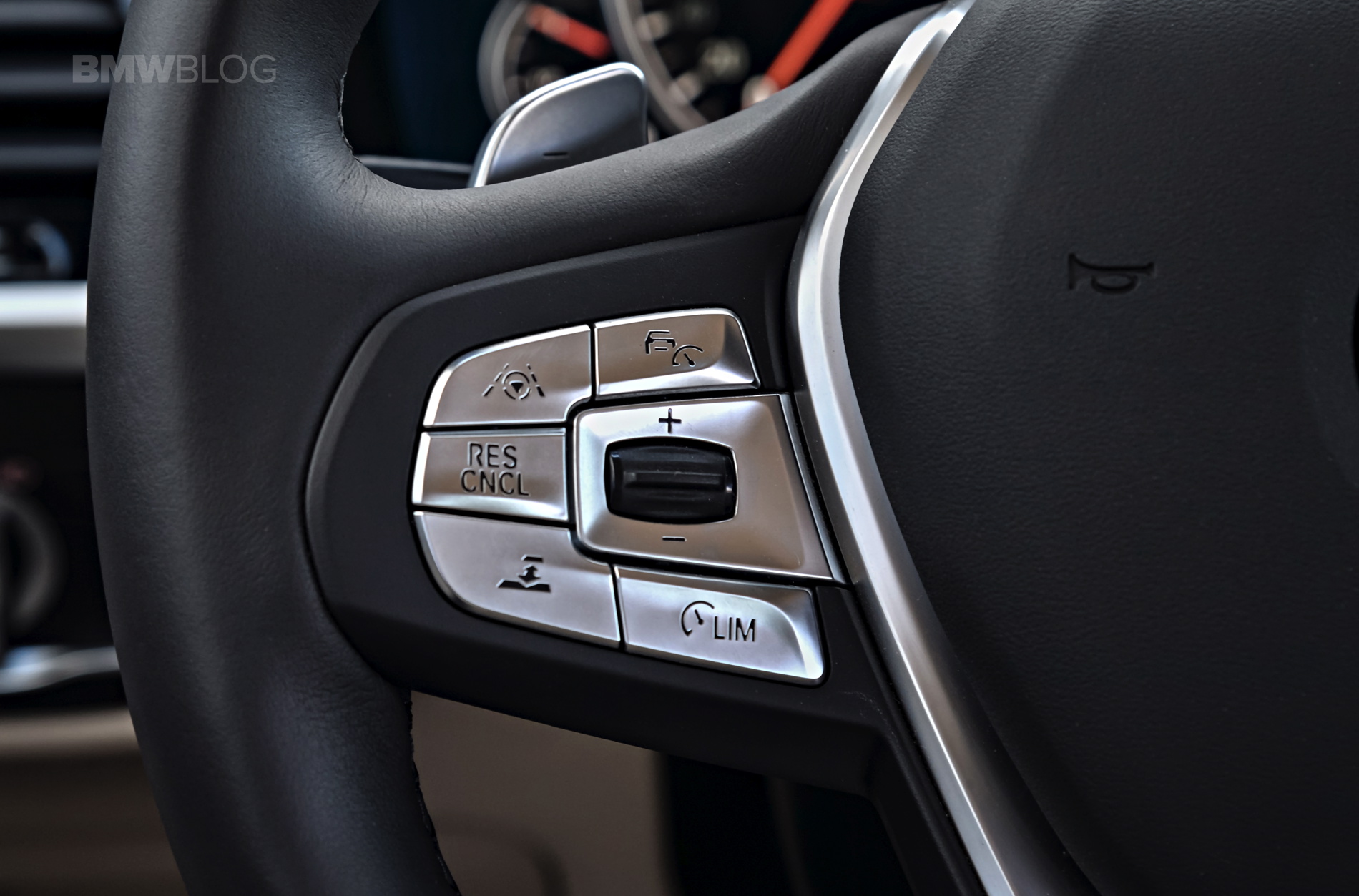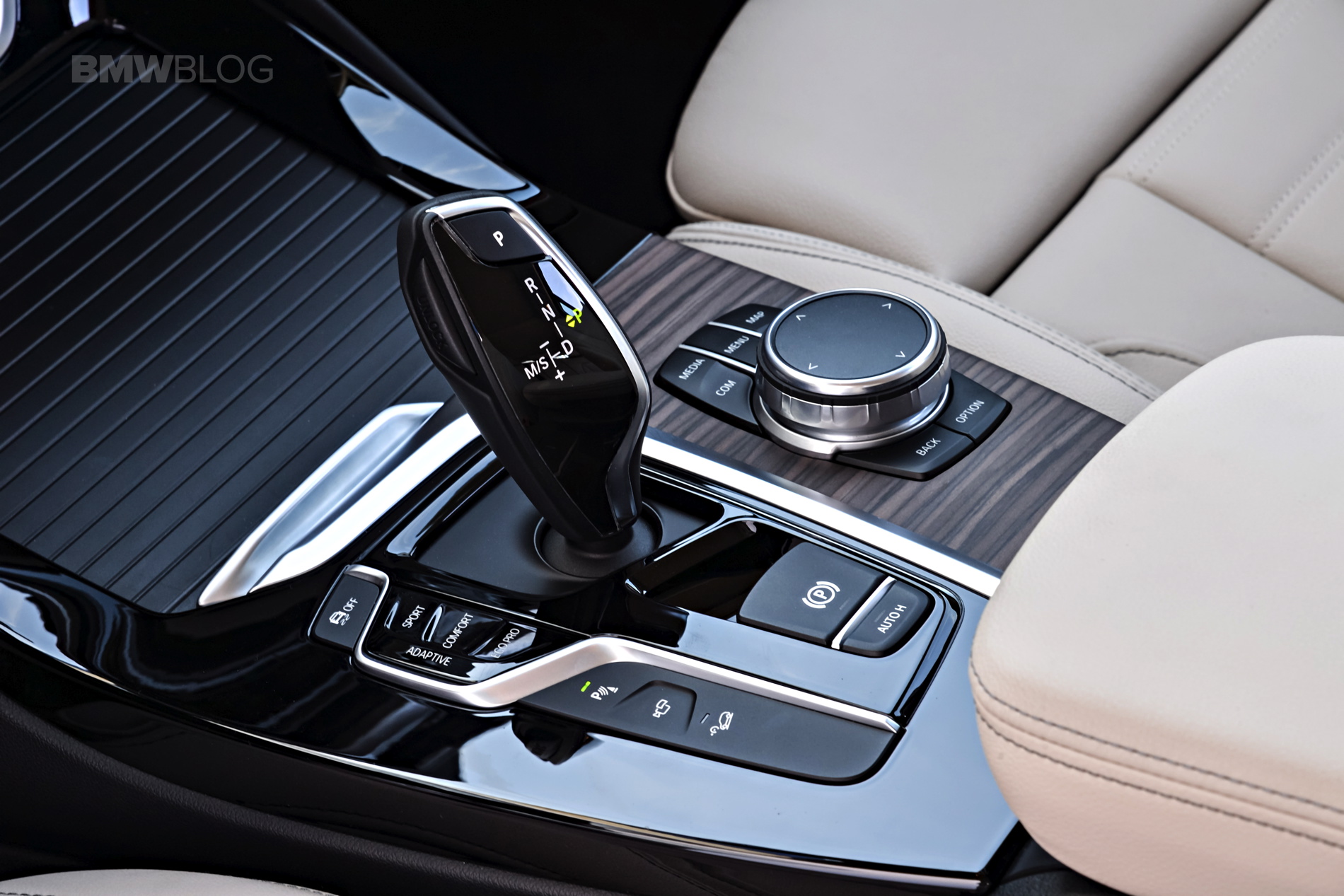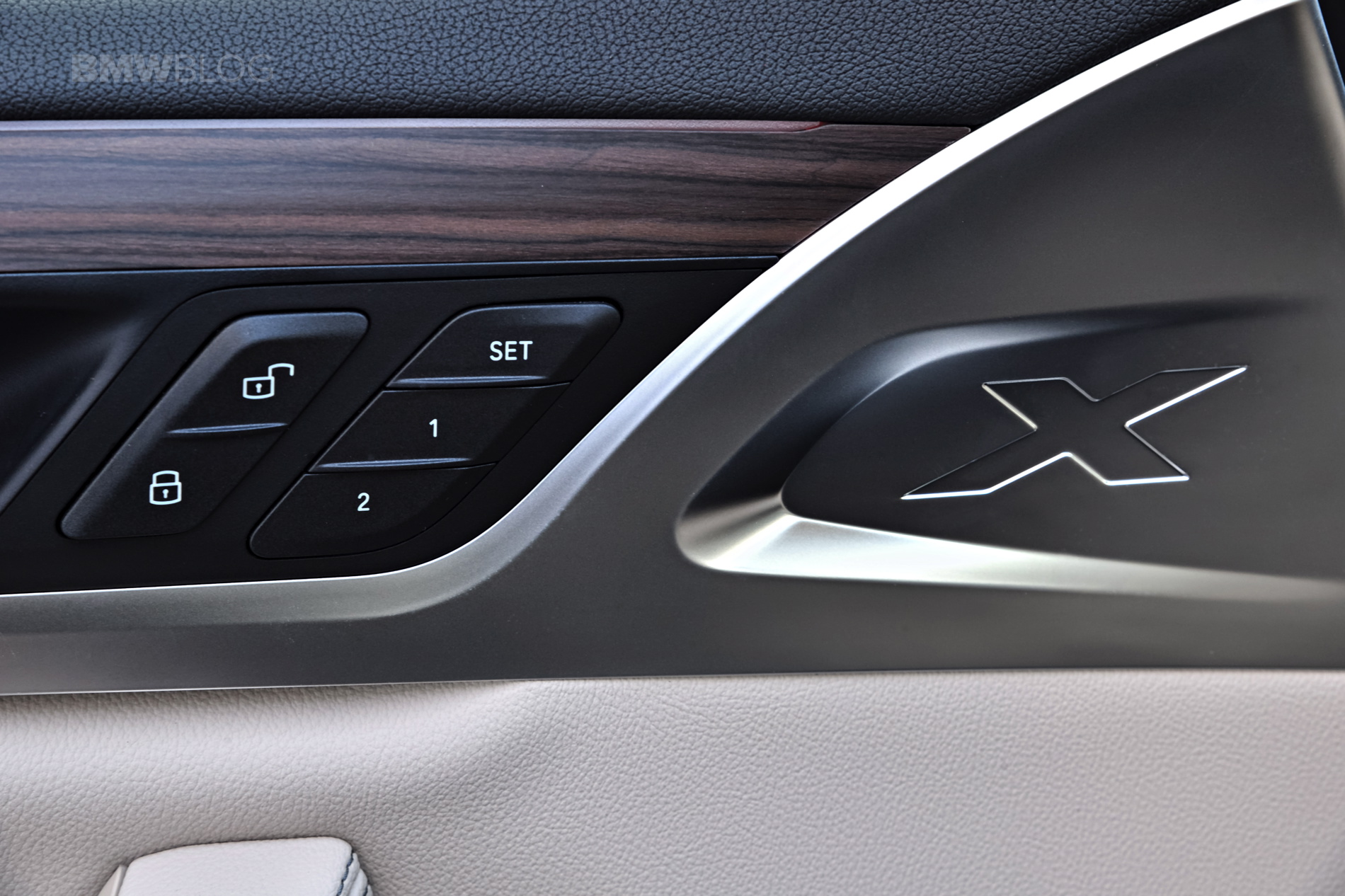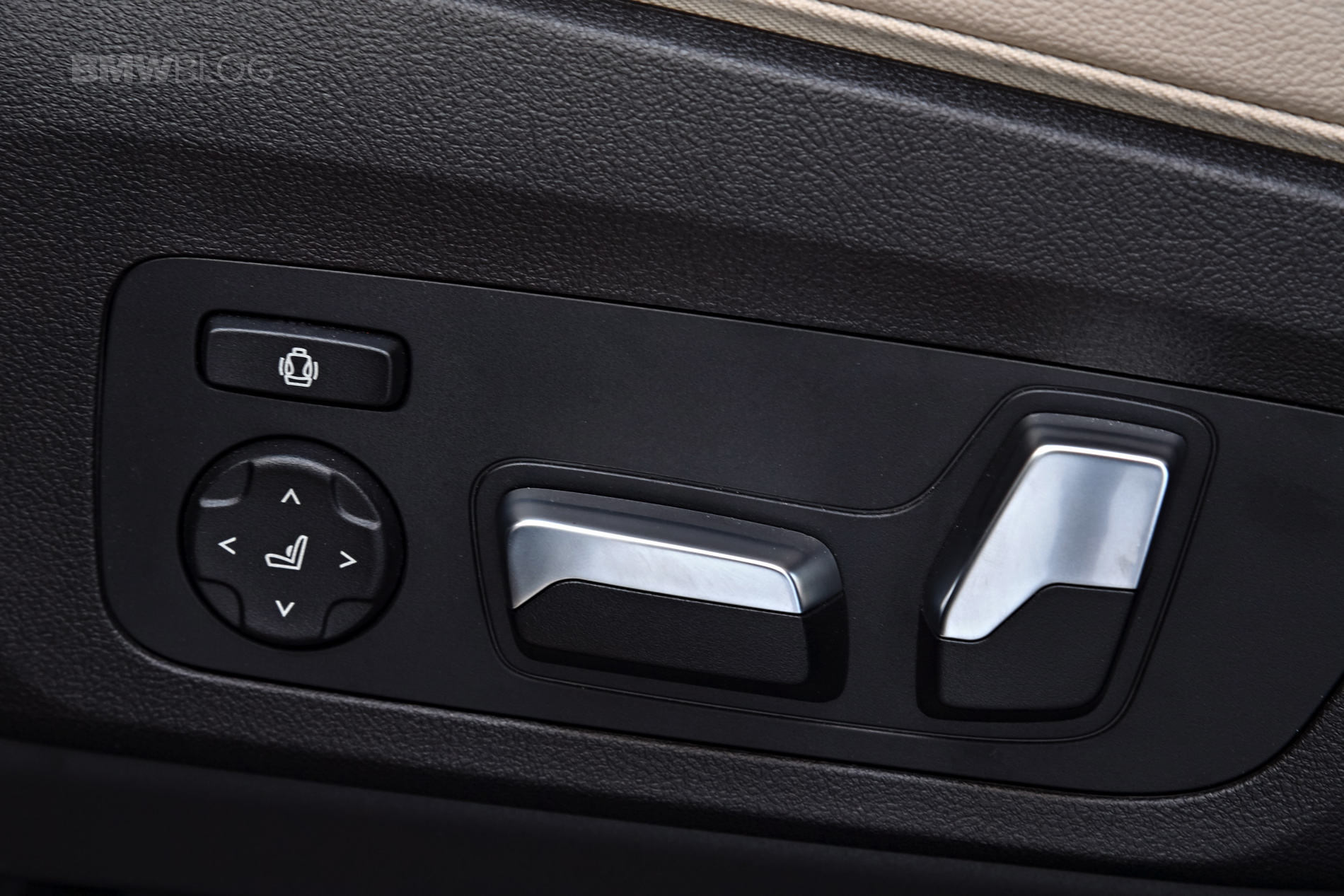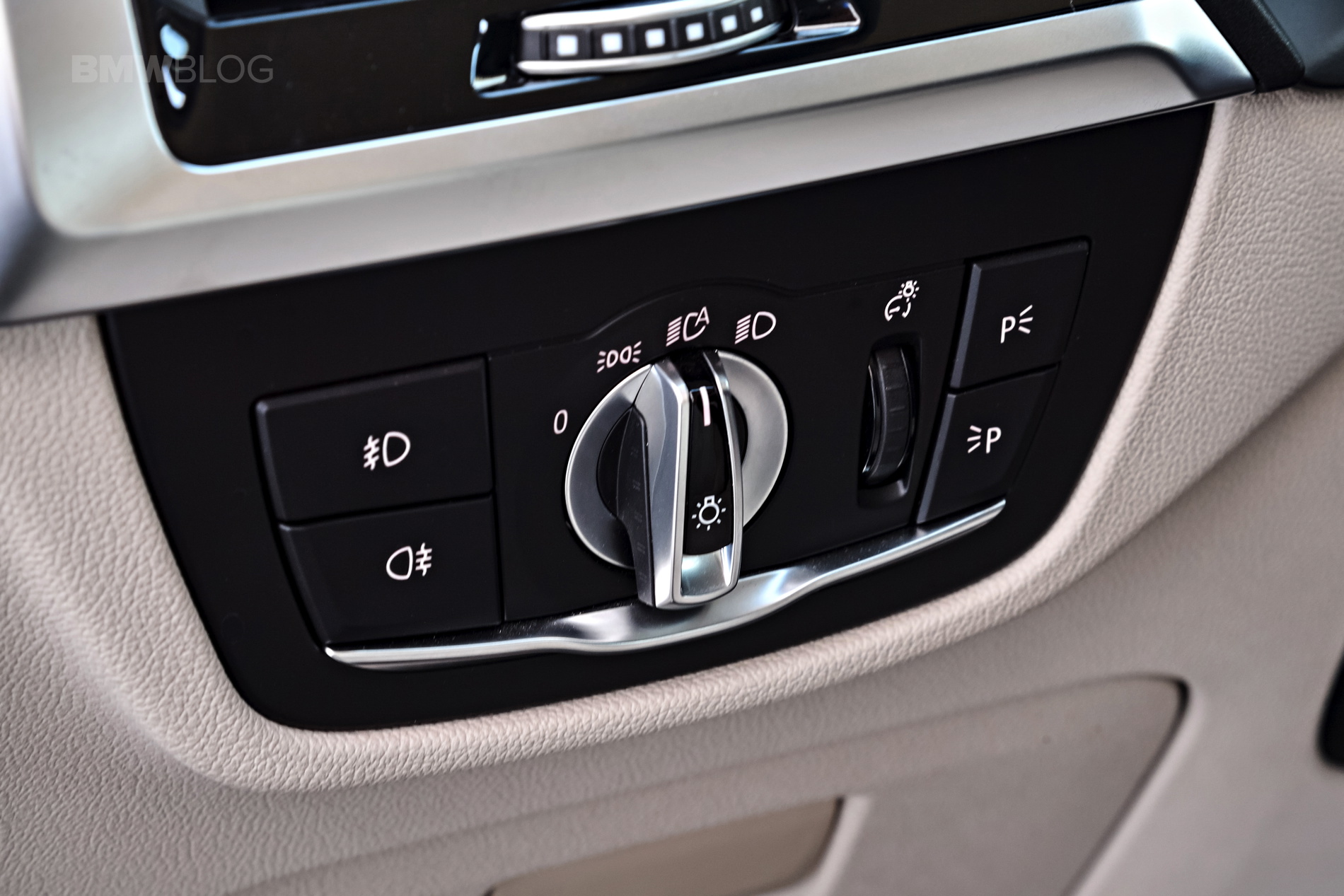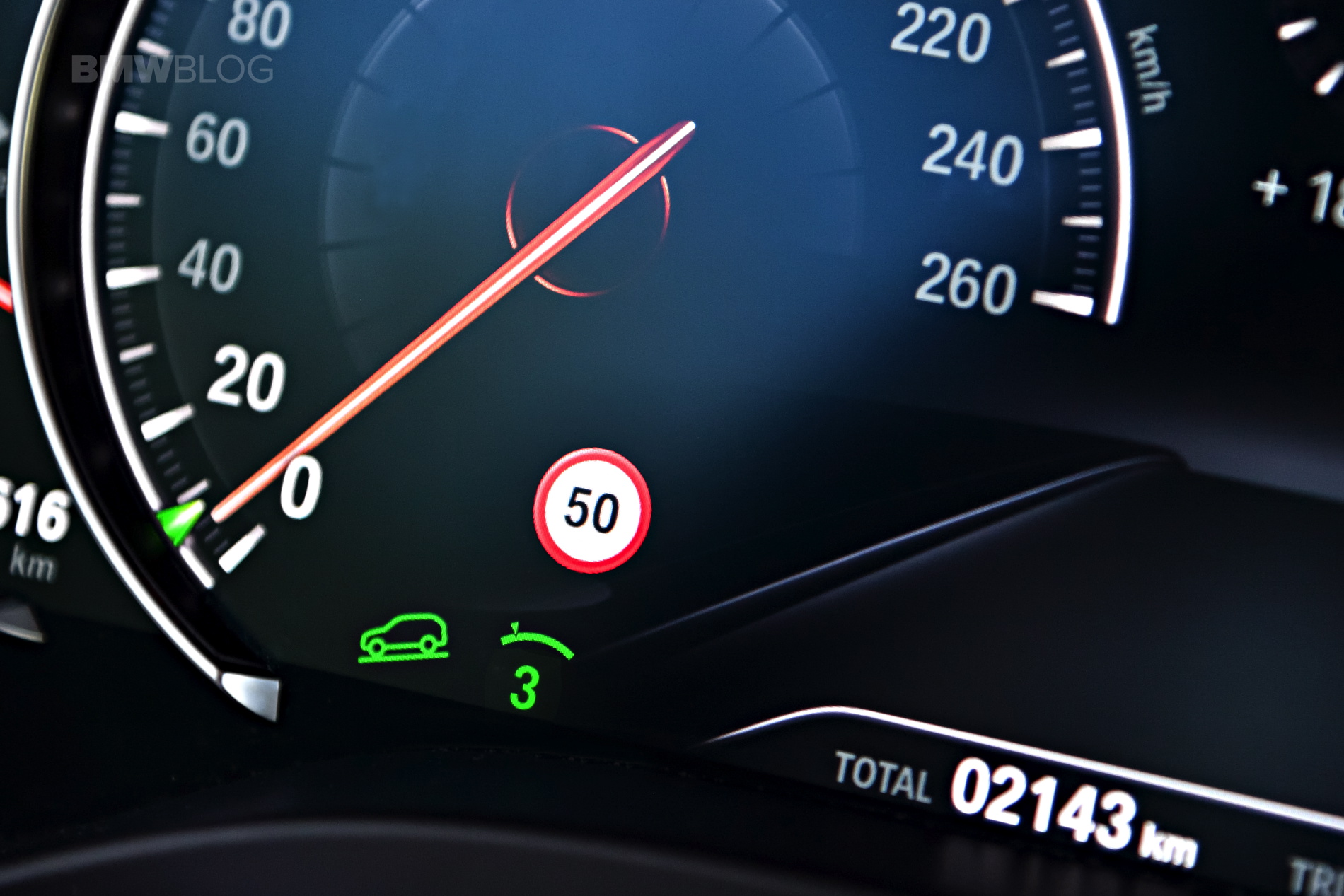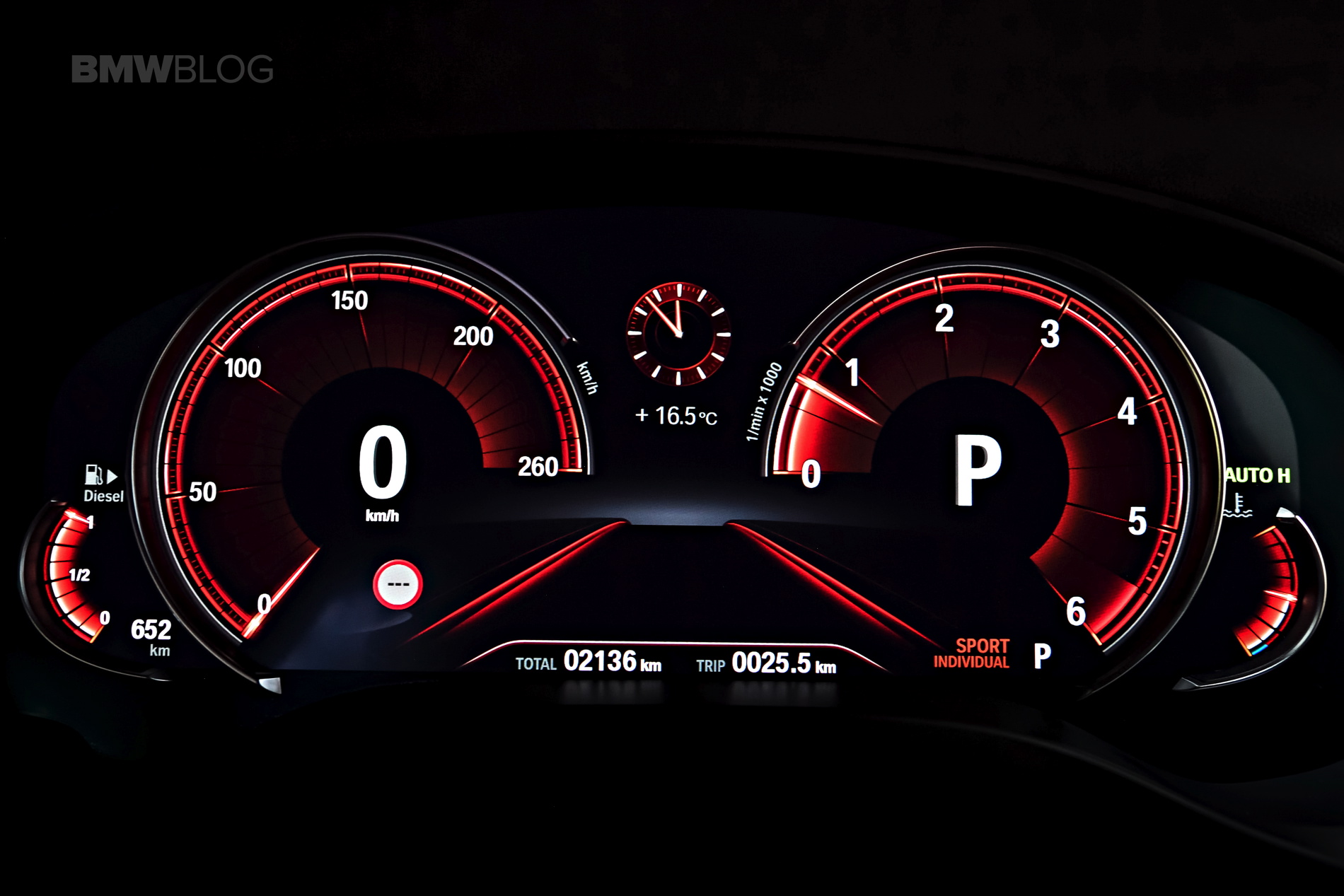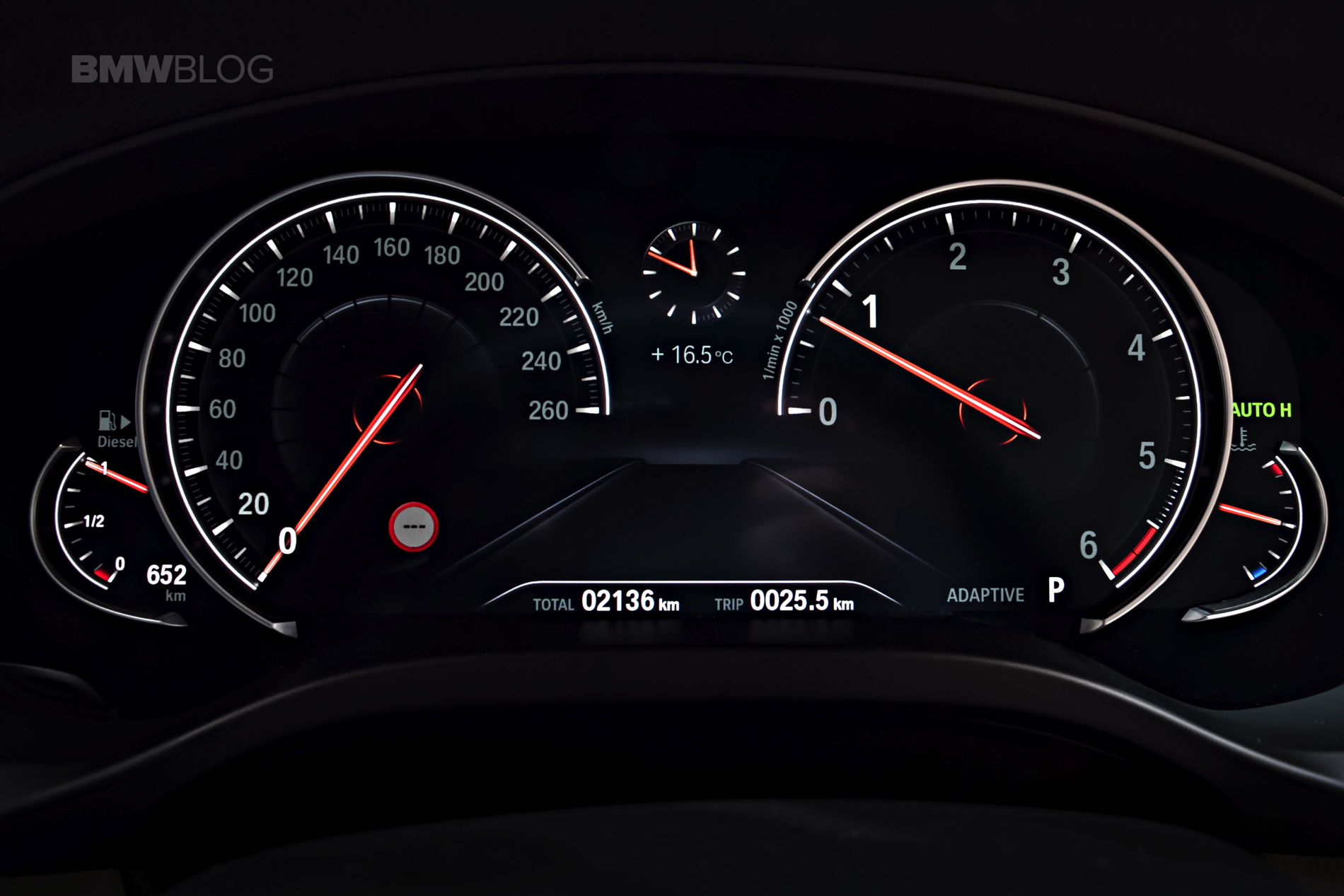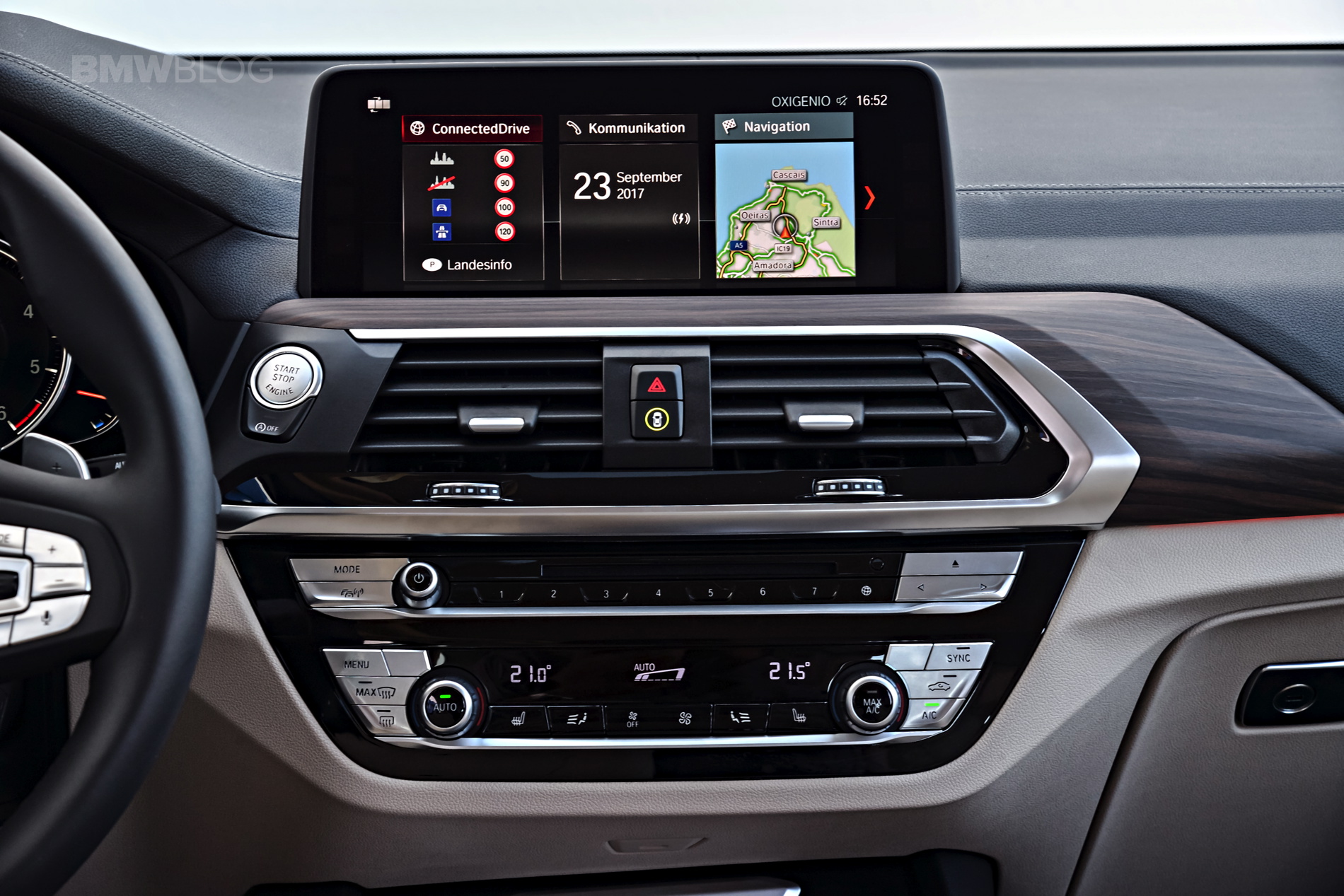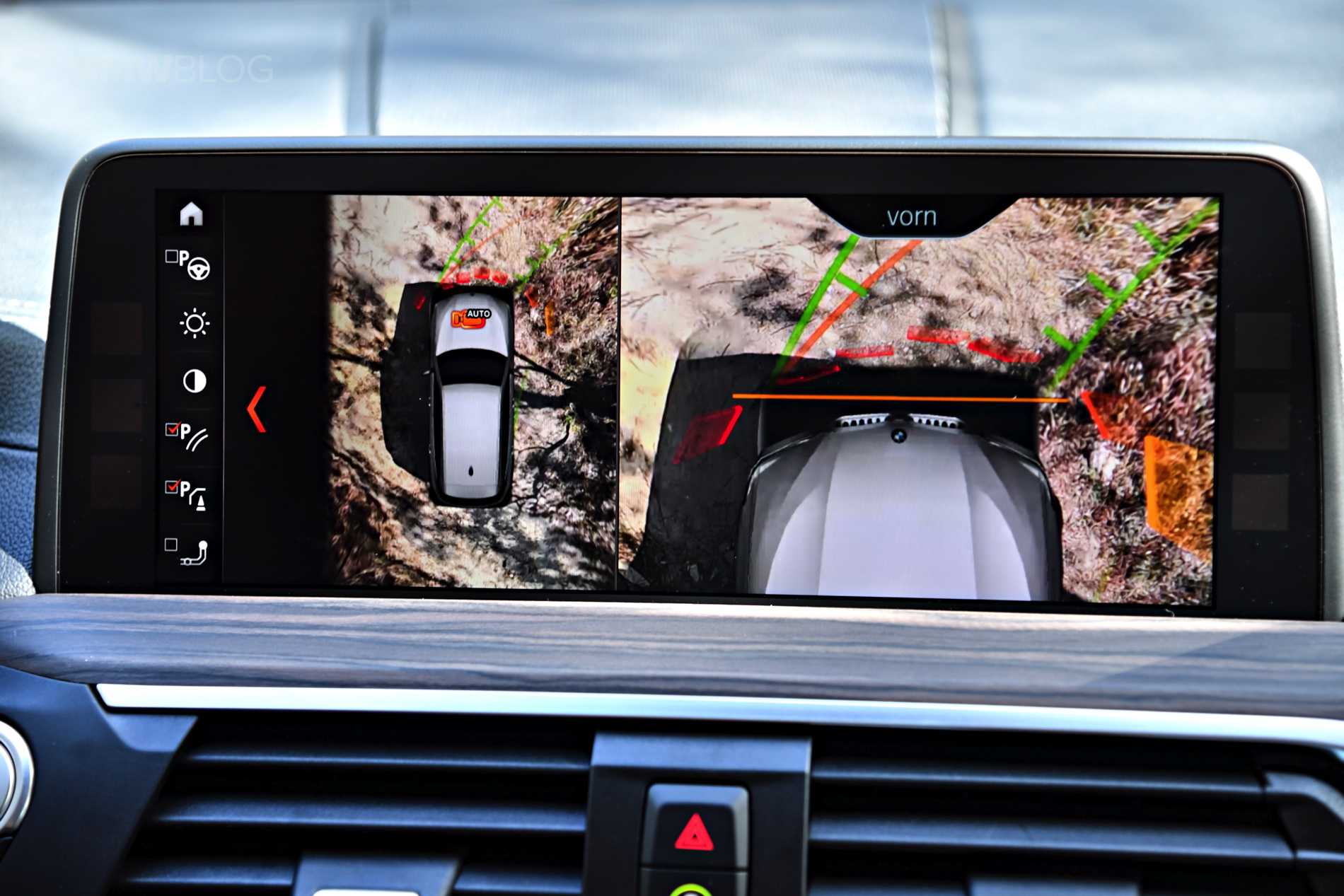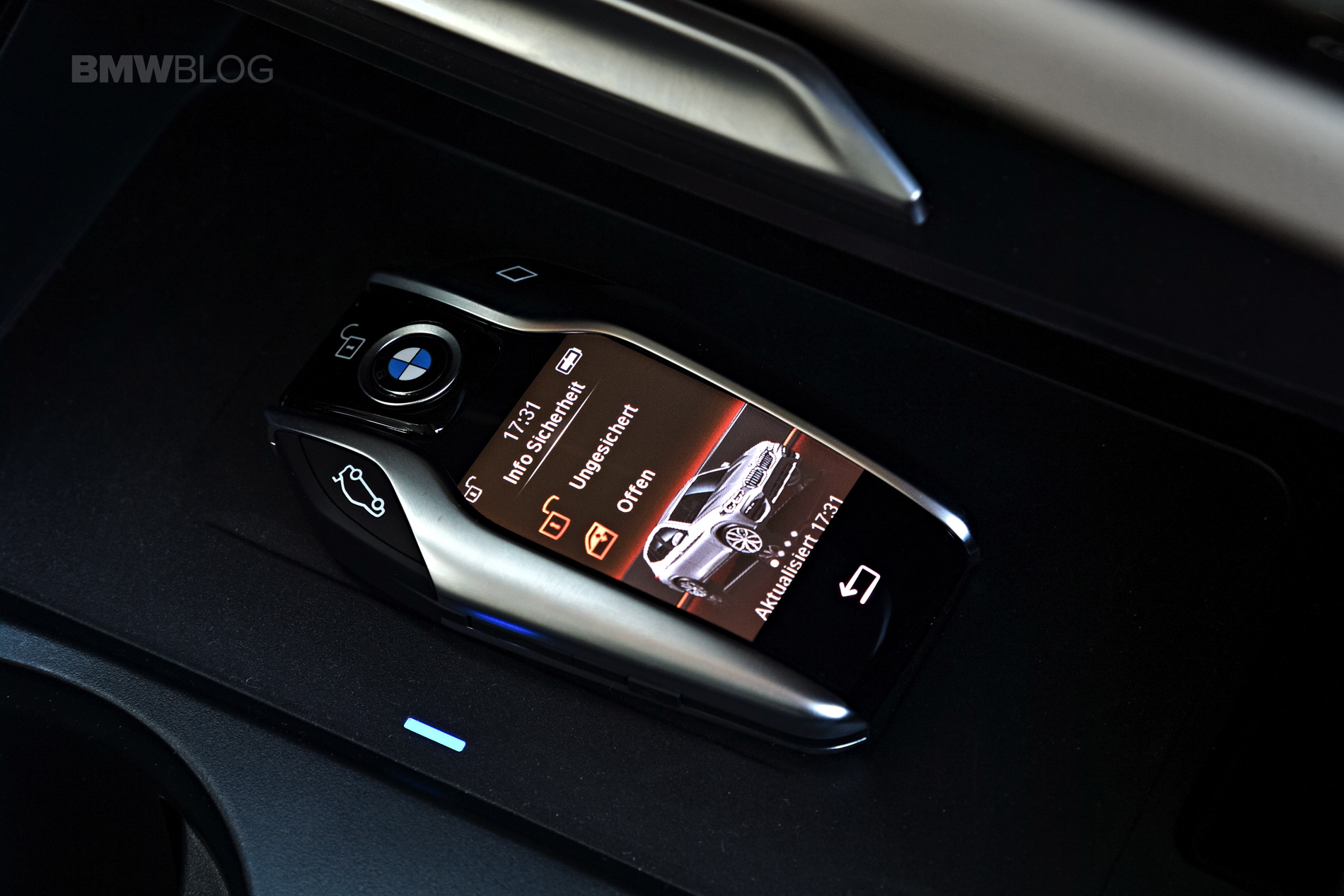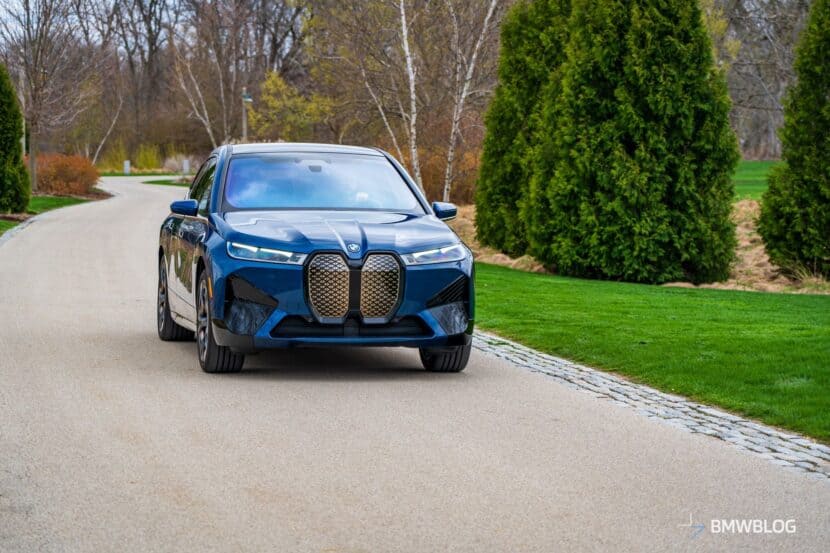While in Portugal test driving the new 2018 BMW X3 xDriveM40i, we’ve also had the opportunity to test a non-US model – the X3 xDrive30d. According to BMW, this will be likely the model of choice for European customers which also continues to show BMW’s commitment to diesel technology.
The 2018 X3 xDrive30d will be the largest diesel-engined X3 – at least at launch time – with a 3.0 liter turbocharged inline-six diesel. It will pack 261 hp and 457 lb-ft of torque. This engine has ample torque, enough to probably make it almost as quick as the hotter M40i variant. Just like the M40i, this engine is matched to the same ZF 8-Speed automatic transmission and the xDrive system with variable torque split.
BMW claims a 0-100km/h time of only 5.8 sec and a fuel economy on the combined cycle of 6 liter/100km, which is quite impressive for an SUV of this size.
While the X3 M40i was setup for some spirited driving around the beautiful Sintra, Portugal, the xDrive30d was scheduled for some time through the rocky trails in the region. The idea was to test the new X3 in a less common environment, some sort of a mild offroad track that could highlight some of the unknown qualities of the new SUV.
Most of the “offroad” exercises were focused around the controlled ride downhill which is achieved by using BMW’s hill-descent control system where you adjust the car’s speed via the cruise control and keep your feet off the brake and throttle pedals. Scary at first, especially at steep angles, but comforting and refreshing after it gains your trust. The HDC system completed the tasks without a sweat
The X3 xDrive30d was riding on 20 inch wheels wrapped around 245/45 front and 275/40 rear tires with standard street pressure , so the ride clearance was ample, even when approaching the obstacles in front of you at 25 degrees angles. Most of the exercises were performed in a safe environment, one that’s expected from a driver who attempts to take some rocky backroads, so the speed limits were fixed, variably, between 5 and 8 mph.
Through some of the sandy sections of the course, we noticed some momentarily spin wheel before the xDrive system kicks in to distribute the torque power to the proper axle in order for the car to seemingly move forward.
At the end of the hour-long exercise, we concluded, along with our driving partner – a funny, British lad – that some Europeans might set across some of those rocky roads, but almost no American will ever attempt to “offroad” the X3. “You chaps have plenty of real, serious, manly trucks on your side of the pond”, concluded the fellow British journalist.
On the short drive back to camp, we had the brief chance to test the 3.0 liter diesel on “regular” roads as well, and the driving experience is not a far departure from the M40i’s. The chassis is still composed, stiff and dynamic, but with the less powerful engine, you lose some of the snaps exposed by the M Performance Automobile model.
The BMW’s 3.0 liter diesel six-cylinder is a beauty and makes us sad that it won’t likely arrive in the US. It exerts the typical torque ranges of a powerful diesel, so even at low RPM, you won’t ever feel in need for more power. The eight-speed transmission is even a better match for this xDrive30d, with smooth shifts and aiding with fuel economy.
Available for market launch in November in Europe, the BMW X3 xDrive30d, which will always carry the Advantage equipment package, costs at least 55,700 euros. The predecessor was barely cheaper with a basic price of 55,500 euros.


